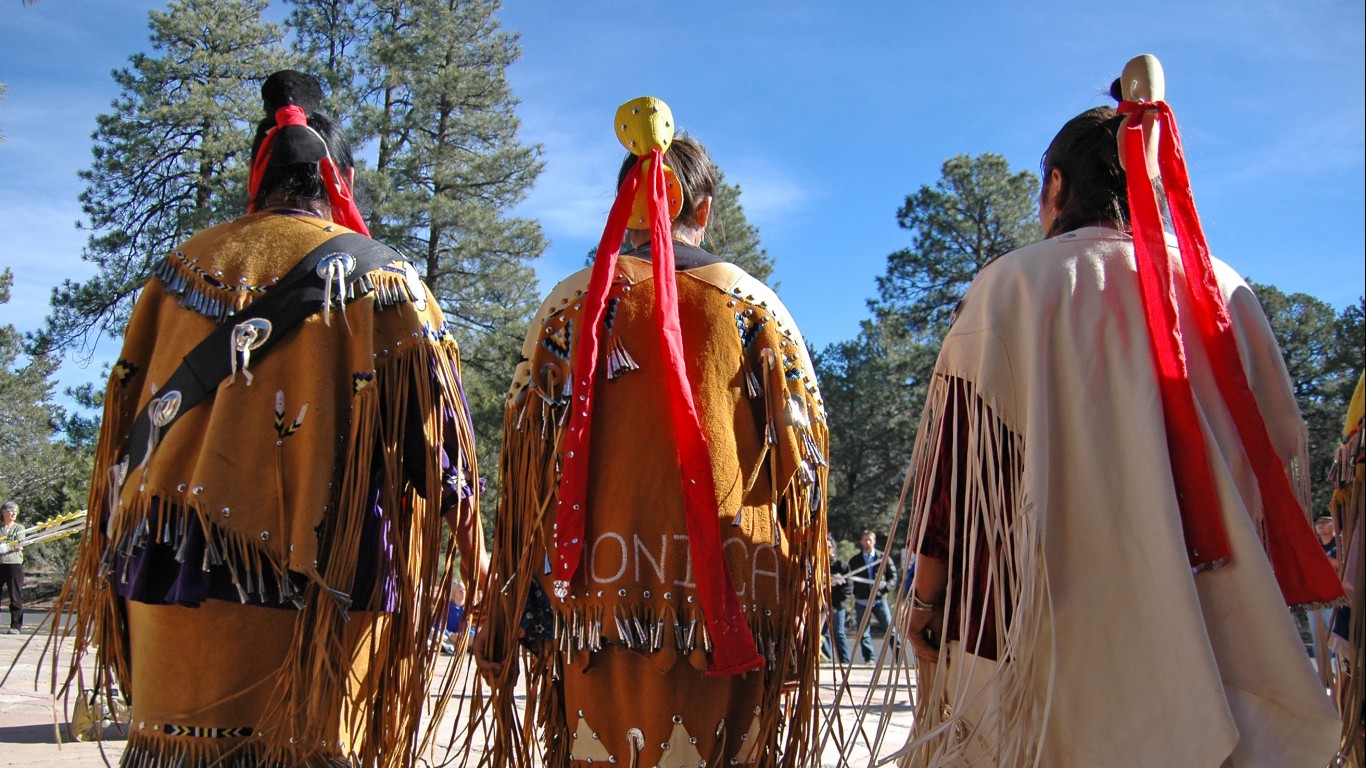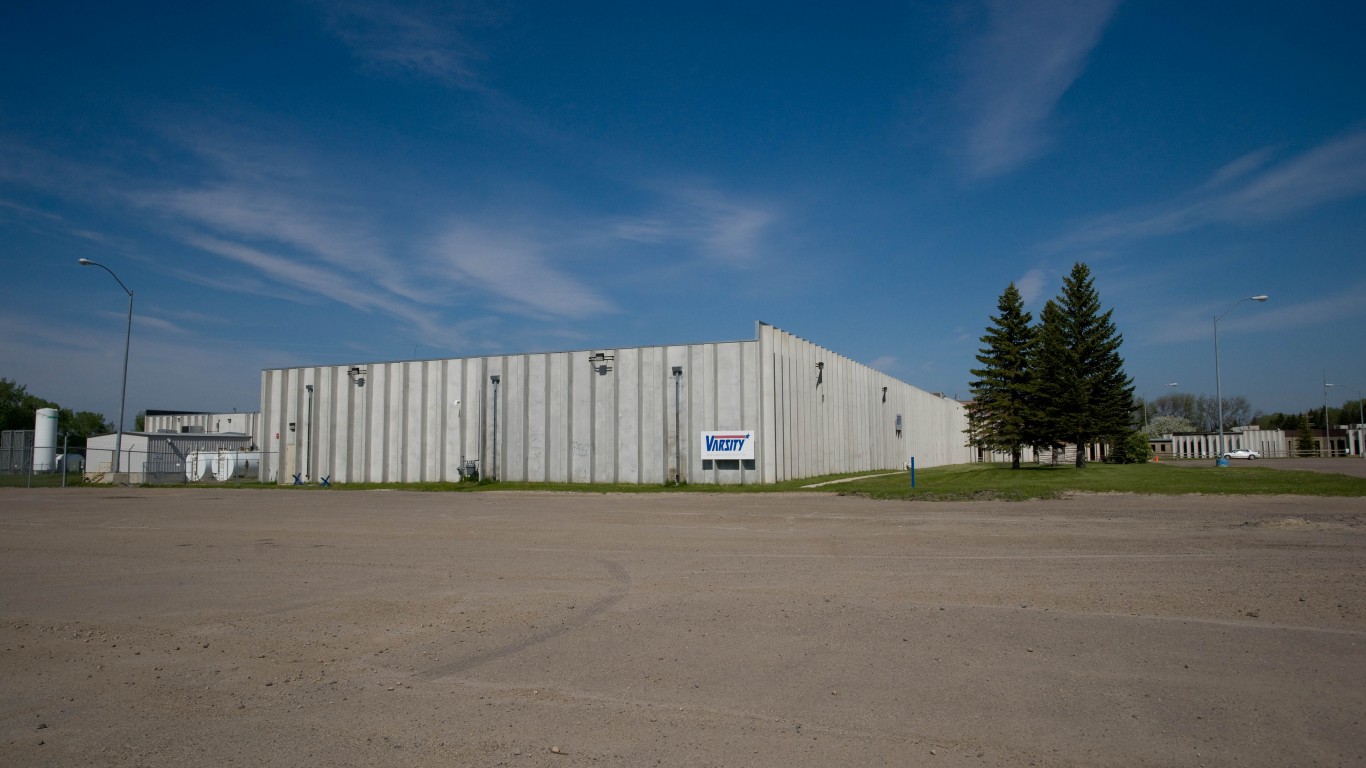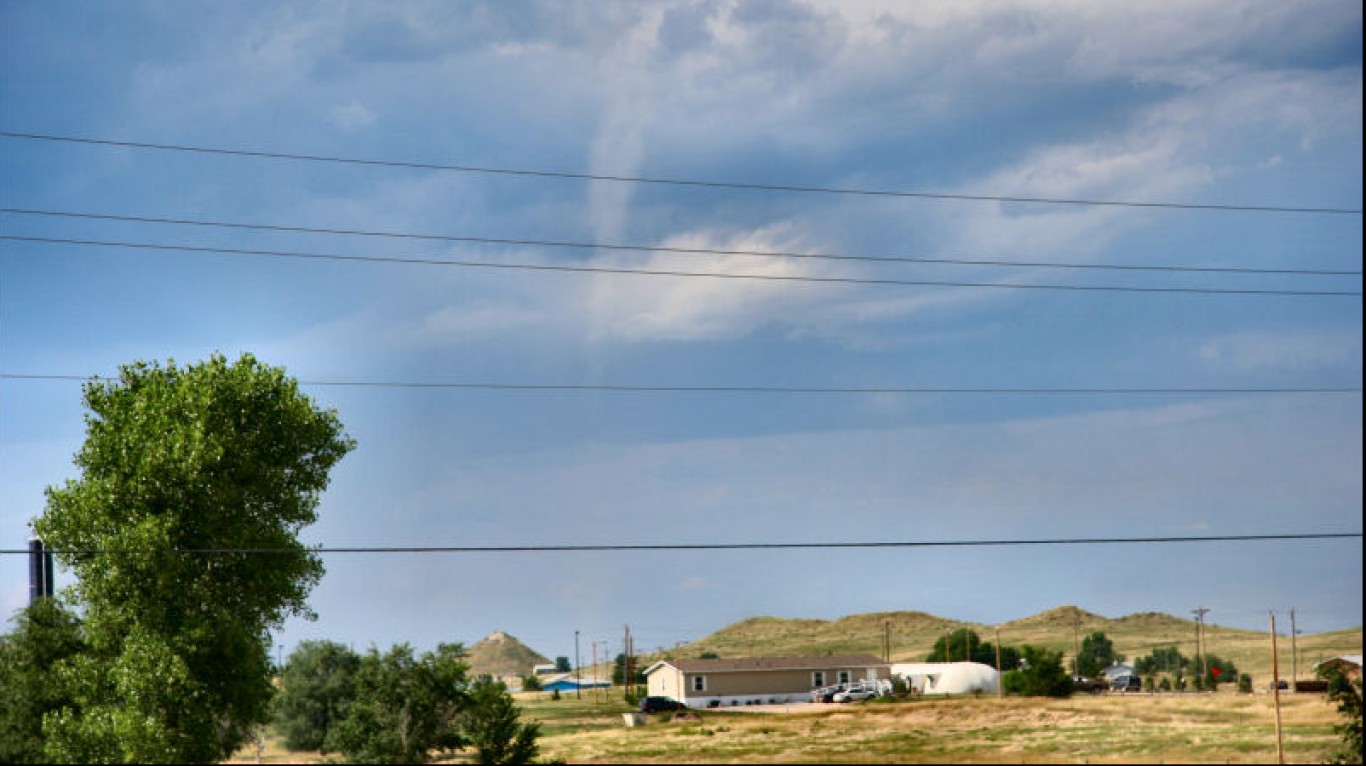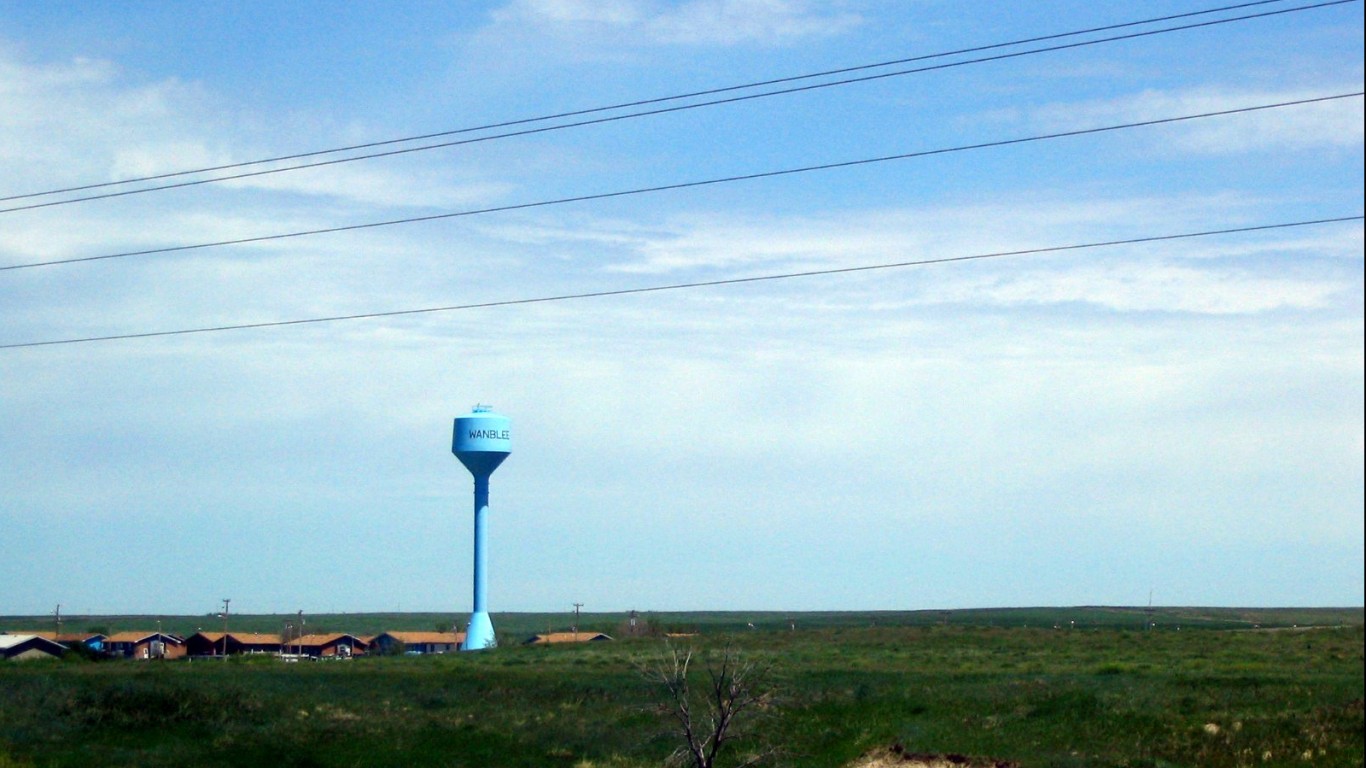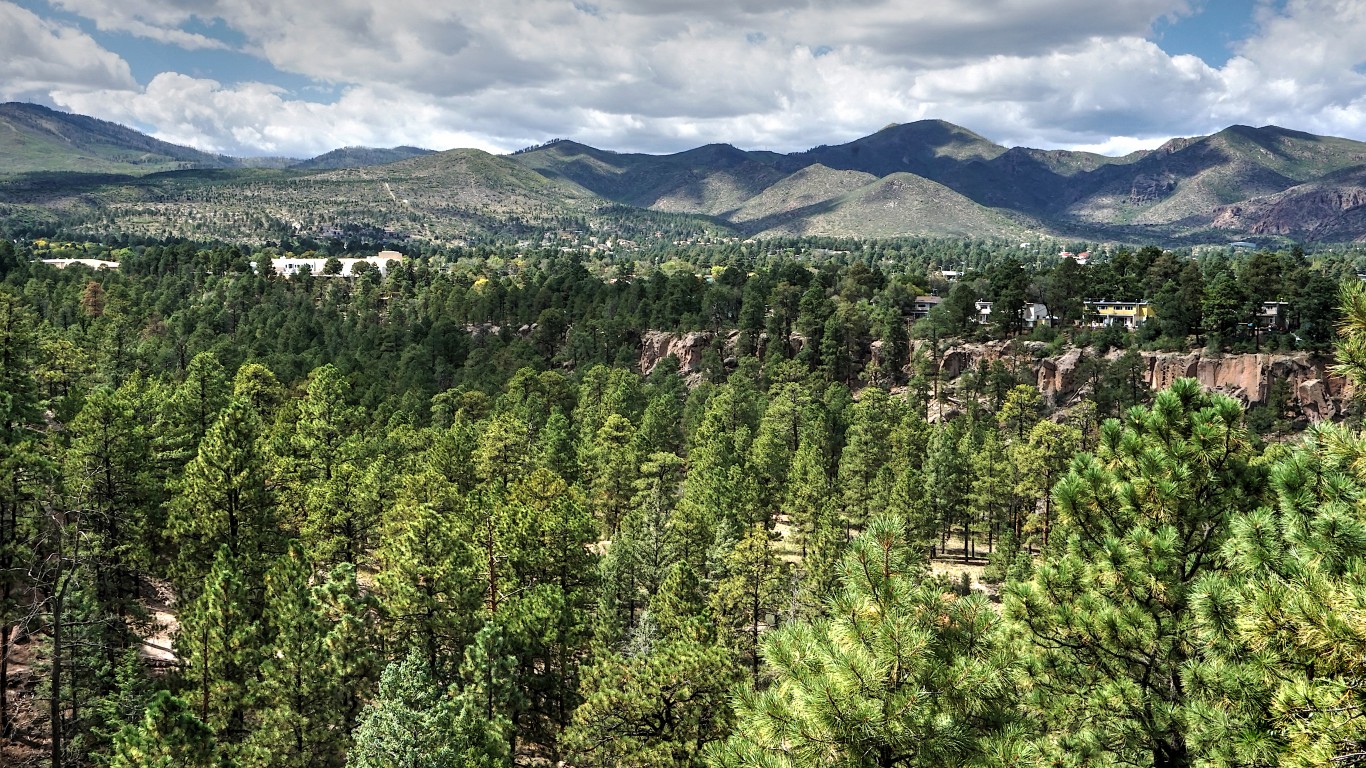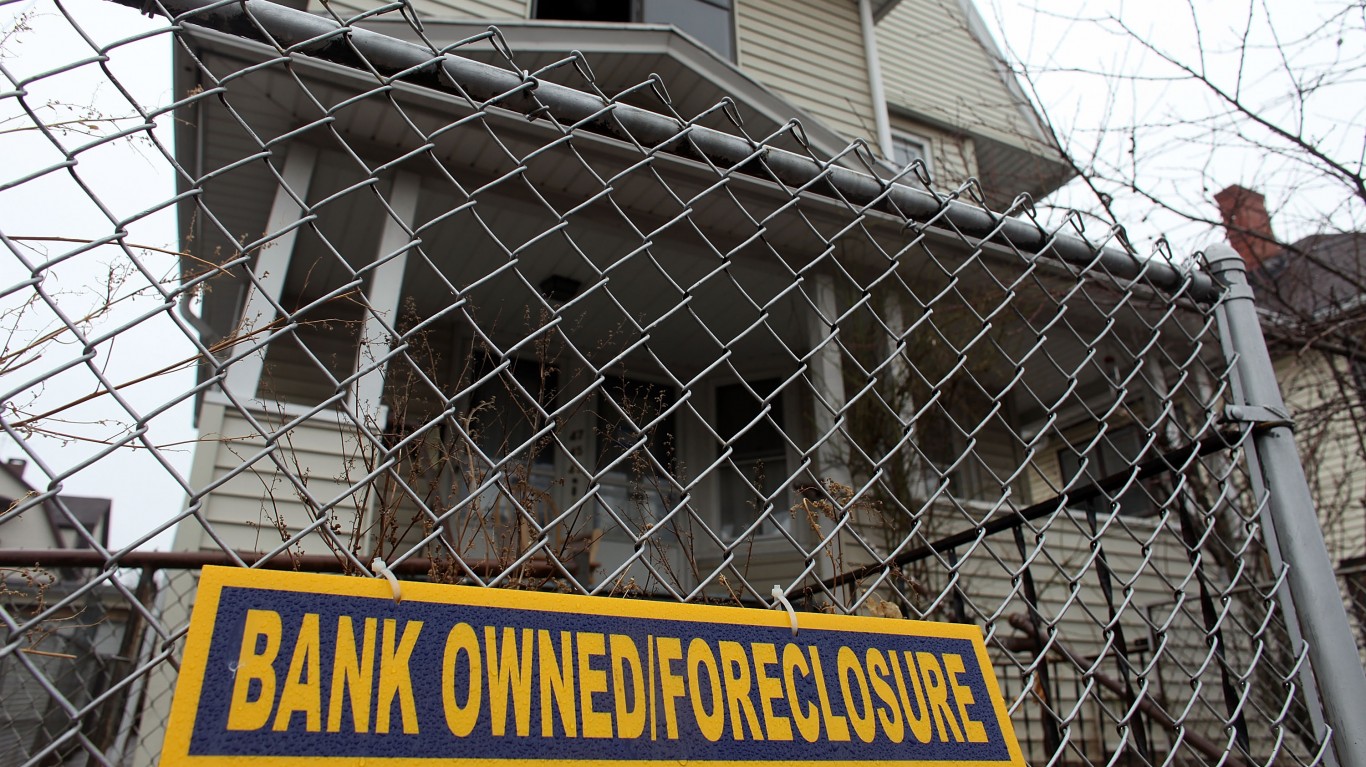
Since hitting a multi-decade peak of 15.9% in 2011, the annual poverty rate in the United States has been steadily improving. Though the COVID-19 pandemic and resulting recession may ultimately drive poverty back up, there are communities all over the United States where poverty is so prevalent that it touches nearly the entire community.
For the vast majority of Americans, the federal poverty line is set at an annual income of $12,880 for an individual, and $26,500 for a family of four. In dozens of American cities and towns, well over half the population live below that income threshold.
Using five-year average poverty rates from the U.S. Census Bureau’s 2019 American Community Survey, 24/7 Wall St. identified the poorest places in the country. We included all cities, towns, villages, and unincorporated areas known as Census designated places, or CDPs, with populations of at least 500 people in our analysis. Places like college campuses and military bases were excluded as income data can be skewed in these areas.
In each of the communities on this list, the poverty rate exceeds 60%. Many of these poor areas tend to have several other socioeconomic characteristics in common as well. Often, they have limited economic opportunities, which discourages many to the extent that they exit the labor force as evidenced by low labor force participation in these areas. Unemployment, too, is often high. Additionally, educational attainment levels are typically very low in these places, further limiting job and earnings opportunities. Many of these areas have relatively small shares of high school and college-educated adults. Here is a list of the most educated cities in every state.
Many of these communities are also home to large populations of demographic groups that, for a variety of historical, social, and economic reasons are among the most likely to be financially disadvantaged and lack access to opportunity in the United States. These groups include Native Americans and Hispanic and Latino Americans. Here is a list of the states with the most Indian reservations and tribal areas.
Click here to see poorest places in the country.
Click here to see our detailed methodology.
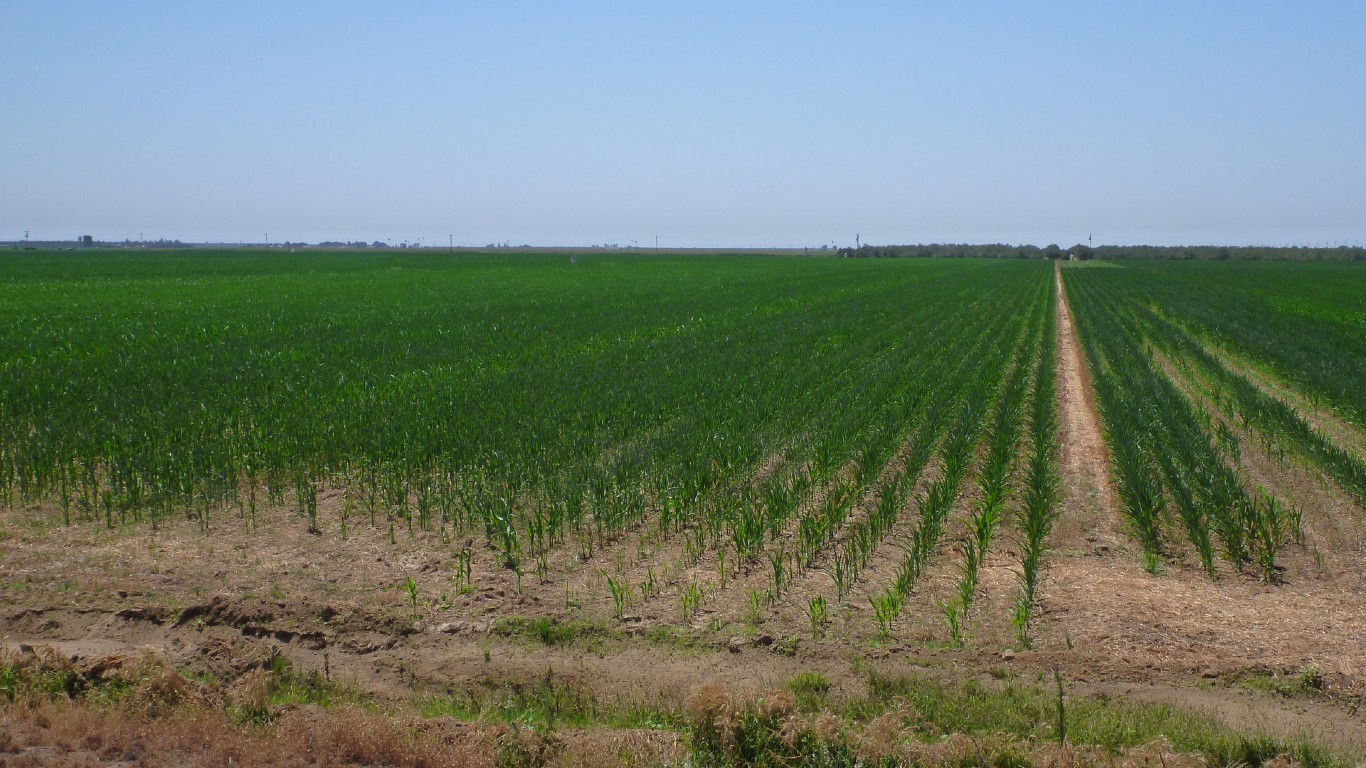
50. Strathmore, California
> Poverty rate: 60.1%
> Median household income: $25,500
> Adults with a bachelor’s degree: 6.4%
> Total population: 3,033
The Strathmore Census designated place in California is one of the 50 poorest places in the country, with a poverty rate of 60.1%. The typical household in Strathmore, which is located Tulare County in the state’s Central Valley, has an annual income of $25,500, which is about $37,300 less than the national median household income.
Those with higher levels of educational attainment are more likely to earn higher wages and hold steadier employment. In Strathmore, just 6.4% of adults have a bachelor’s degree, compared to 32.1% of American adults.
[in-text-ad]
49. Niland, California
> Poverty rate: 60.1%
> Median household income: $21,330
> Adults with a bachelor’s degree: 0.0%
> Total population: 631
Niland is a small unincorporated community in southern California about one hour north of the Mexican border. A little over 60% of the local population lives below the poverty line, more than four times the national poverty rate of 13.4%.
In June 2020, Niland was devastated by a wildfire that destroyed nearly 40 homes, exacerbating conditions in an area where many were already struggling financially.

48. Palmona Park, Florida
> Poverty rate: 60.7%
> Median household income: $22,257
> Adults with a bachelor’s degree: 5.1%
> Total population: 1,209
Palmona Park is a small Census designated place in Florida’s Fort Myers metro area. Most households in the area earn less than $23,000 a year, and 60.7% of local residents live below the poverty line.
Incomes tend to rise with educational attainment, and in areas like Palmona Park, where large shares of residents are struggling financially, relatively few people have a postsecondary education. Just 5.1% of the 25 and older residents in Palmona Park have a bachelor’s degree or higher, compared to 32.1% of adults nationwide who do.
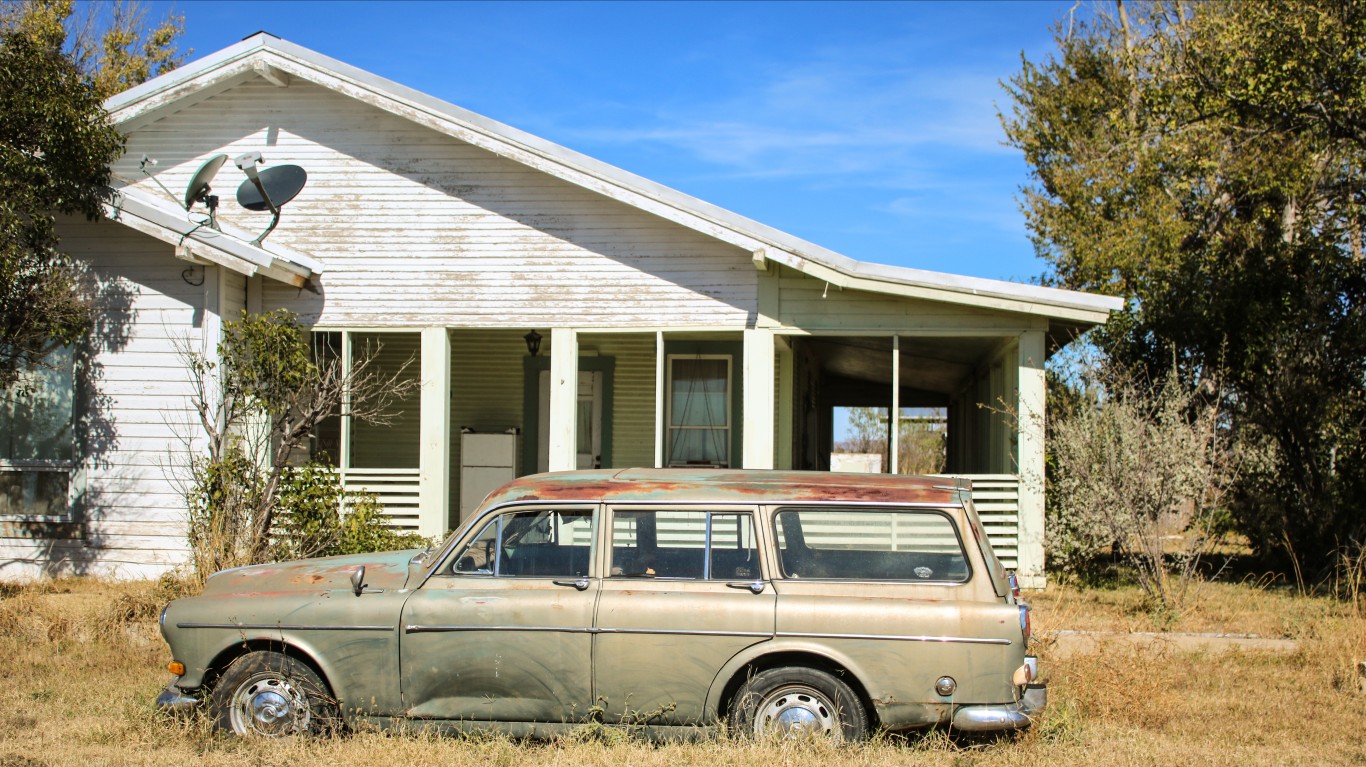
47. Scissors, Texas
> Poverty rate: 60.9%
> Median household income: $22,887
> Adults with a bachelor’s degree: 5.5%
> Total population: 3,594
Scissors is a small unincorporated community near the southern tip of Texas. Nearly 61% of the local population lives on poverty level income. Widespread poverty often goes hand-in-hand with joblessness, and in Scissors, an average of 10.4% of the labor force have been unemployed in the last five years.
A high school education is prerequisite for most gainful employment opportunities. In Scissors, just 38.1% of the 25 and older population have a high school diploma or equivalent. Nationwide, 88% of the 25 and older population do.
[in-text-ad-2]
46. Rosedale, Mississippi
> Poverty rate: 60.9%
> Median household income: $15,615
> Adults with a bachelor’s degree: 6.1%
> Total population: 1,627
Rosedale, Mississippi, is one of the poorest cities in the United States. An estimated 60.9% of residents of the Mississippi River Delta city live below the poverty line, compared to 13.4% of Americans nationwide.
Economically struggling places like Rosedale are not typically attractive communities for new residents or families. Like many American cities where poverty is prevalent, Rosedale’s population is declining. As recently as 1980, there were nearly 3,000 people living in Rosedale. Now there are around 1,600.

45. Birch Tree, Missouri
> Poverty rate: 60.9%
> Median household income: $14,766
> Adults with a bachelor’s degree: 9.7%
> Total population: 667
Birch Tree is a small city in southern Missouri. One of the poorest cities in the country, Birch Tree’s poverty rate stands at 60.9%, four and a half times greater than the national poverty rate.
Incomes tend to rise with educational attainment. In Birch Tree, less than two in every three adults have a high school diploma or equivalent, and fewer than one in 10 have a bachelor’s degree. Nationwide, 88% and 32% of the 25 and older population, respectively, do.
[in-text-ad]
44. Thoreau, New Mexico
> Poverty rate: 61.1%
> Median household income: $19,792
> Adults with a bachelor’s degree: 4.3%
> Total population: 1,641
Thoreau, New Mexico, is a Census designated place in the western part of the state within the Navajo Nation. Due to a number of historical and contemporary factors, Native American populations are more likely than the typical American to face serious financial hardship. In Thoreau, where 83% of the population identify as Native American, the poverty rate stands at 61.1%, higher than in the vast majority of American cities and towns.
Western New Mexico, where Thoreau is located, had been inhabited by Native Americans for more than 10,000 years when the U.S. military wrested control of the area in the 1860s.
43. Medina, Texas
> Poverty rate: 61.2%
> Median household income: $29,958
> Adults with a bachelor’s degree: 5.2%
> Total population: 4,727
Medina, Texas, a small unincorporated community west of San Antonio, is one of the poorest places in the United States. The local poverty rate stands at 61.2%, and most households earn less than $30,000 annually.
As is the case in many places on this list, educational attainment is low in Medina. About half of all area adults have a high school diploma or equivalent, and fewer than one in 10 have a bachelor’s degree. Nationwide, 88% and 32% of the 25 and older population, respectively, do.
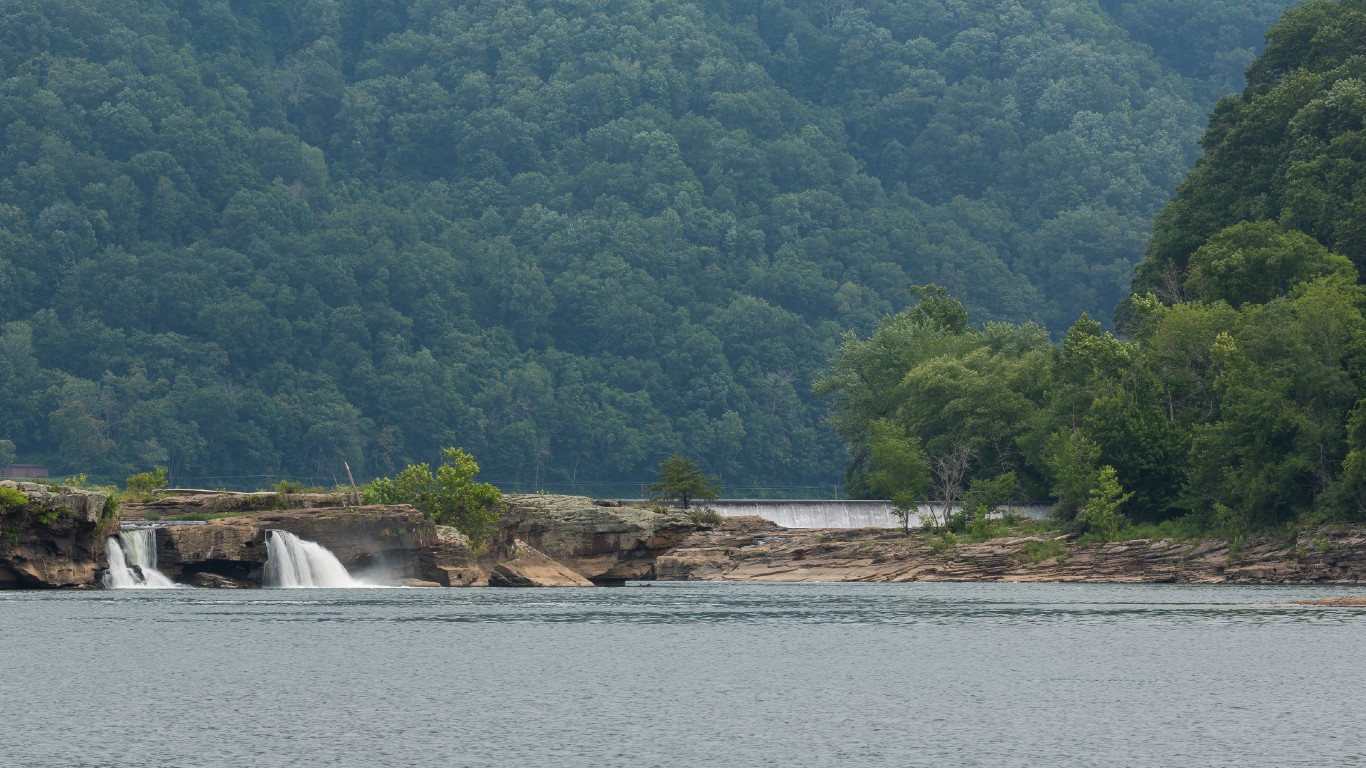
42. Chelyan, West Virginia
> Poverty rate: 61.9%
> Median household income: $25,237
> Adults with a bachelor’s degree: 3.5%
> Total population: 994
Many cities and towns in West Virginia are struggling economically — but in few is poverty as prevalent as in Chelyan, a Census designated place south of Charleston. Nearly 62% of Chelyan residents live below the poverty line compared to just 13.4% of Americans nationwide.
Widespread poverty is due in part to a lack of economic opportunity. Only 22% of the 16 and older population in the area are even in the labor force — compared to 63.4% nationwide — and of them, an average of 62% have been unemployed in the last five years.
[in-text-ad-2]
41. Brunswick, North Carolina
> Poverty rate: 62.1%
> Median household income: $18,056
> Adults with a bachelor’s degree: 6.5%
> Total population: 983
Brunswick is a town of about 1,000 people in southern North Carolina. With a 62.1% poverty rate, it is one of the poorest communities in the United States.
Like many other high-poverty areas, economic opportunities are relatively limited in Brunswick. Only 18.3% of the 16 and older population in the area are even in the labor force, and of them, an average of 7.3% have been unemployed in the last five years, compared to the 5.3% national five-year jobless rate.
40. Ventura, New Mexico
> Poverty rate: 62.2%
> Median household income: N/A
> Adults with a bachelor’s degree: 16.1%
> Total population: 714
Ventura, a Census designated place in southern New Mexico, is one of several communities in the state to rank among the poorest in the United States. The poverty rate of 62.2% in Ventura is over four and half times that of the U.S. as a whole.
Working-age residents of Ventura are far less likely to have a job, or be looking for one, than typical Americans in the same age group. The labor force participation rate in the area of 32.8% is just over half the comparable national rate of 63.4%.
[in-text-ad]
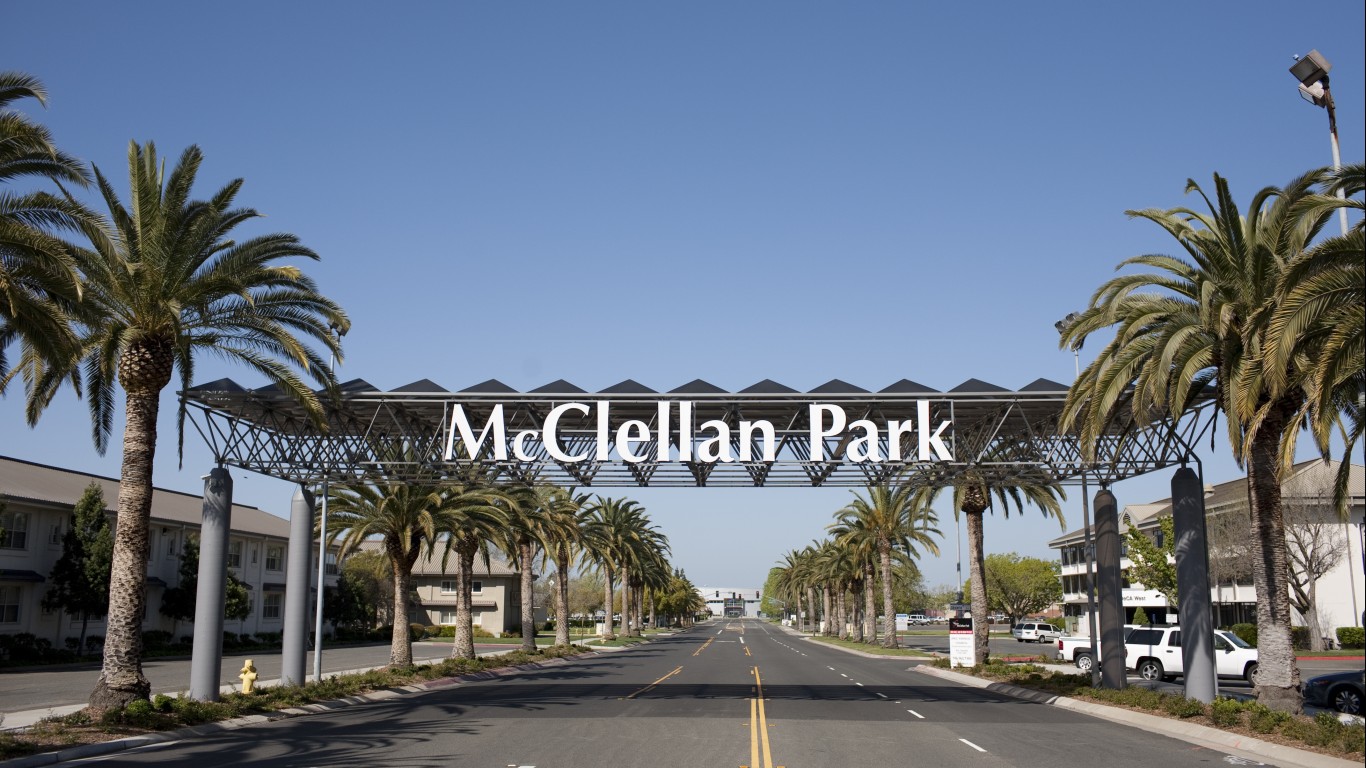
39. McClellan Park, California
> Poverty rate: 62.5%
> Median household income: $21,591
> Adults with a bachelor’s degree: 19.9%
> Total population: 1,046
McClellan Park is the poorest place in California and one of the poorest in the United States. The poverty rate in the unincorporated community of about 1,000 near Sacramento is 62.5%. Additionally, most area households earn less than $22,000 a year.
As is often the case in America’s poorest places, labor force participation is low in McClellan Park. Just 35% of the local 16 and older population are either working or looking for work, well below the comparable 63.4% national rate.
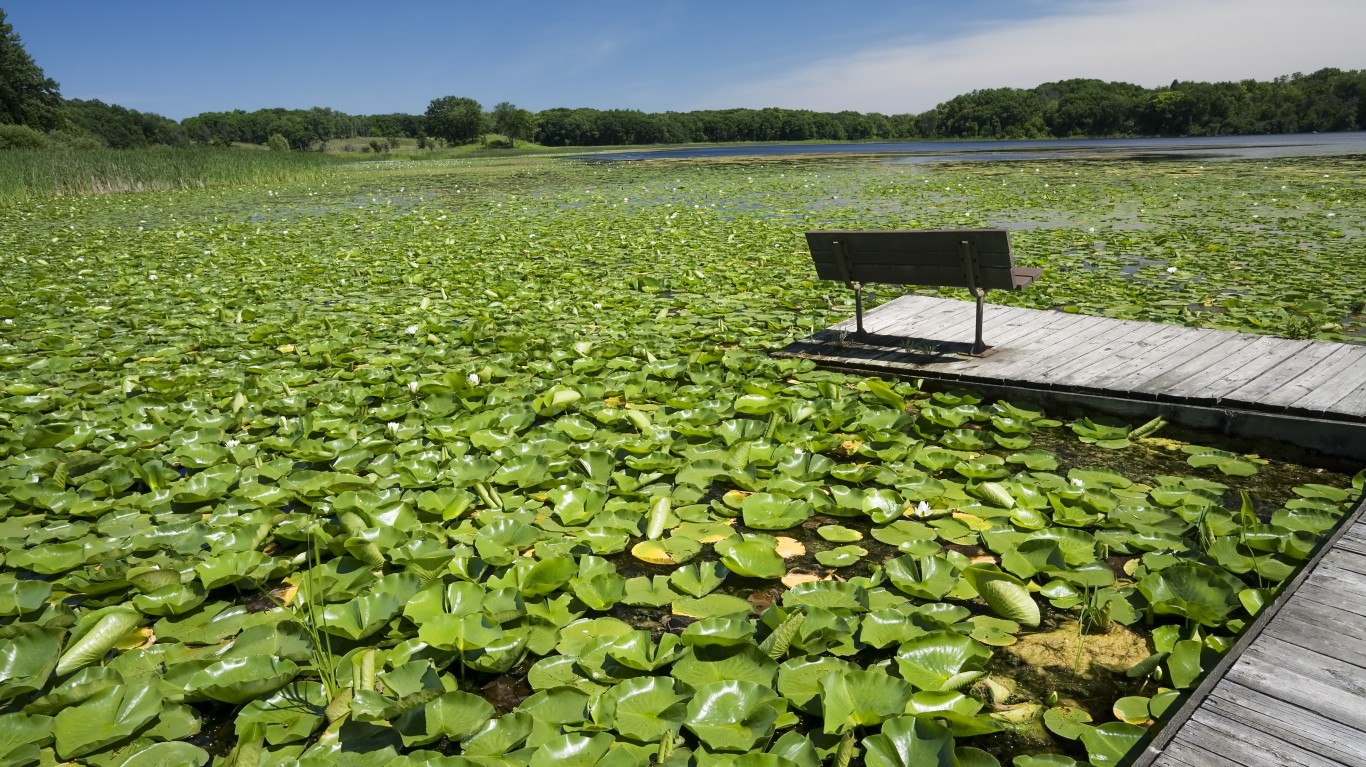
38. Chemung, Illinois
> Poverty rate: 62.7%
> Median household income: $36,228
> Adults with a bachelor’s degree: 0.0%
> Total population: 665
Chemung, Illinois, a Census designated place in the northern part of the state, has a near nation-leading poverty rate of 62.7%.
The area’s low incomes are likely attributable both to the locally available jobs as well as the types of jobs residents are qualified for, which often drive each other. A high school education is fundamental and a prerequisite for the vast majority of employment opportunities in the United States. In Chemung, only one in every four residents who are 25 and older have a high school diploma, compared to 88% of American adults nationwide.

37. Navajo, New Mexico
> Poverty rate: 63.0%
> Median household income: $21,500
> Adults with a bachelor’s degree: 3.8%
> Total population: 1,450
Navajo, New Mexico, is one of several primarily Native American communities in the state to rank on this list. Of the nearly 1,500 people who live in Navajo, 63.0% live below the poverty line.
In Navajo, 94% of the population identify as Native American — and incomes among the local Native American population are far lower than they are for others. The typical Native American household in Navajo County earns less than $22,000 a year. Meanwhile, most white households in the area earn over $43,000 a year.
[in-text-ad-2]
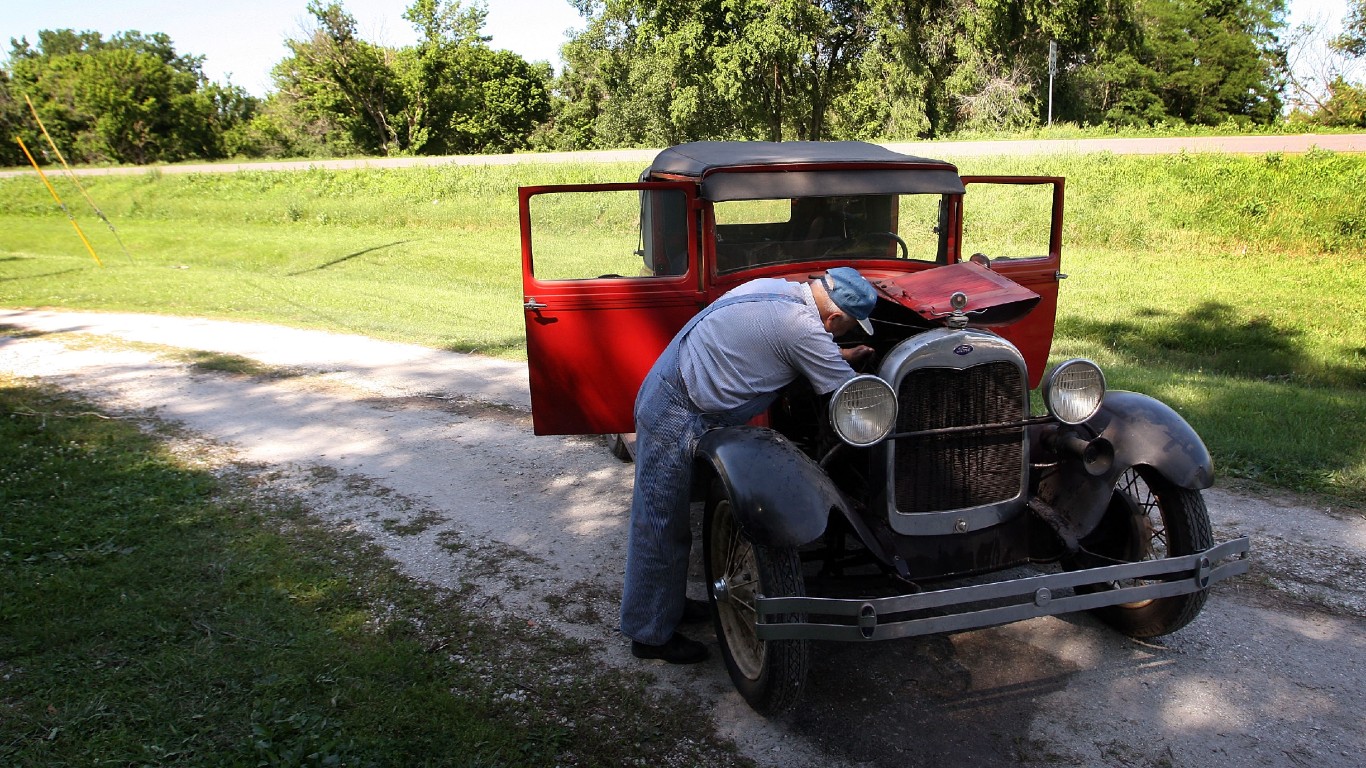
36. Verona, Missouri
> Poverty rate: 63.5%
> Median household income: $28,633
> Adults with a bachelor’s degree: 1.0%
> Total population: 647
Verona is a town in southwestern Missouri. Most households in Verona earn less than $29,000 a year, and 63.5% of the local population live on poverty level income.
Lower-income areas often also have low educational attainment rates. In Verona, only 1% of the 25 and older population have a bachelor’s degree or higher, compared to 32.1% of the 25 and older population nationwide.
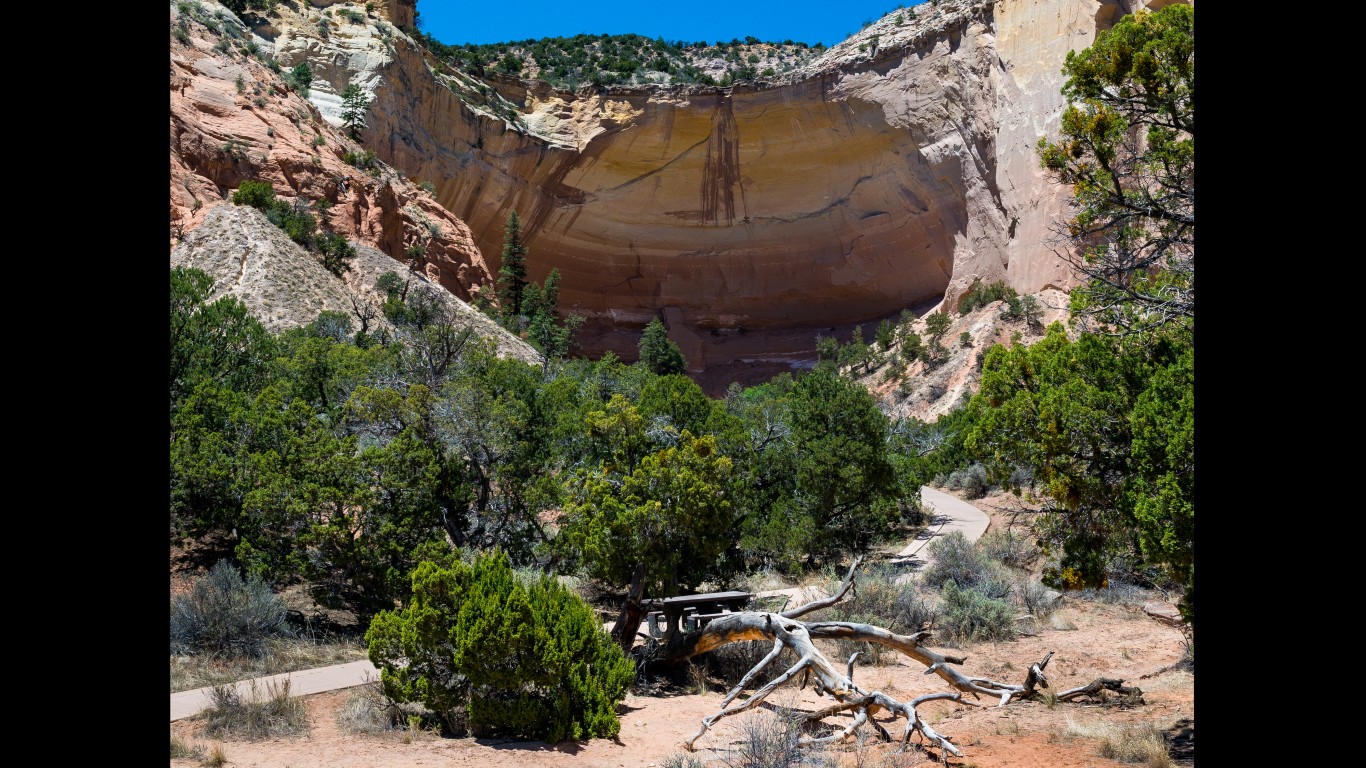
35. Tierra Amarilla, New Mexico
> Poverty rate: 63.6%
> Median household income: N/A
> Adults with a bachelor’s degree: 10.6%
> Total population: 784
Tierra Amarilla, New Mexico, located in the northern part of the state, is one of the poorest places in the United States. The local poverty rate of 63.6% is nearly five times higher than the comparable national poverty rate.
The area’s widespread poverty is due in part to limited economic opportunity. Over the last five years, an average of 55% of the labor force have been unemployed, compared to just 5.3% of the national labor force. One local employer in the area is the Rio Arriba Detention Center, which detains over 2,000 people a year, mostly for violent crimes and drug offenses.
[in-text-ad]
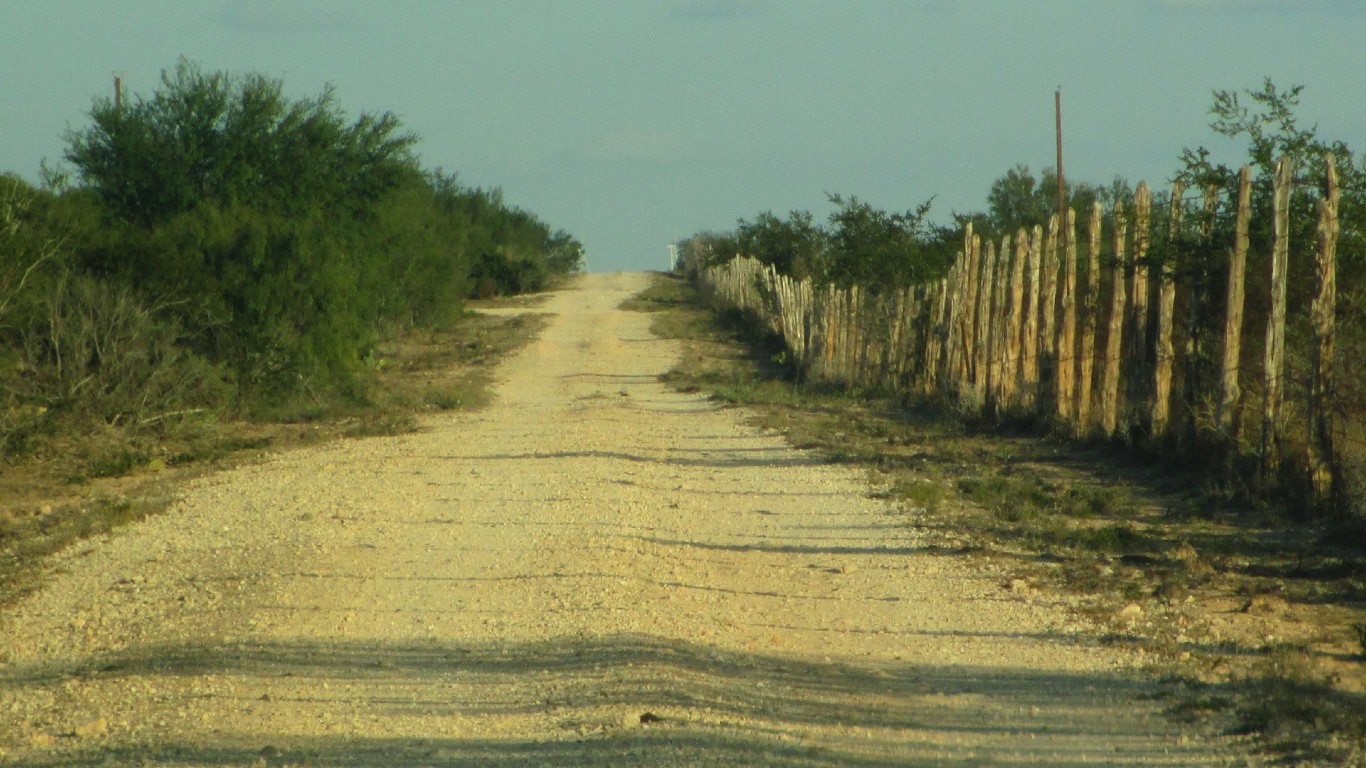
34. Ranchitos East, Texas
> Poverty rate: 64.4%
> Median household income: N/A
> Adults with a bachelor’s degree: 5.4%
> Total population: 506
Ranchitos East, Texas is a small Census designated place with a population of about 500 in the southern part of the state not far from the Mexican border. The local poverty rate of 64.4% is nearly the highest in Texas and one of the highest nationwide.
The area’s low incomes are likely attributable in part to the types of jobs local residents are qualified to do. A high school education is a prerequisite for the vast majority of employment opportunities in the United States. In Ranchitos East, only about one in every three residents who are 25 and older have a high school diploma, compared to 88% of American adults nationwide.
33. Neopit, Wisconsin
> Poverty rate: 64.7%
> Median household income: $29,345
> Adults with a bachelor’s degree: 8.1%
> Total population: 776
Neopit, a Census designated place in northeastern Wisconsin, is the only place in the state to rank on this list. The local poverty rate stands at 64.7%, nearly five times the national poverty rate.
Neopit is located in the Menominee Reservation, home to the Menominee Tribe. For a variety of historical and contemporary reasons, Native Americans are one of the most economically disadvantaged groups in the United States. In Neopit, nearly 95% of the population identify as Native American.
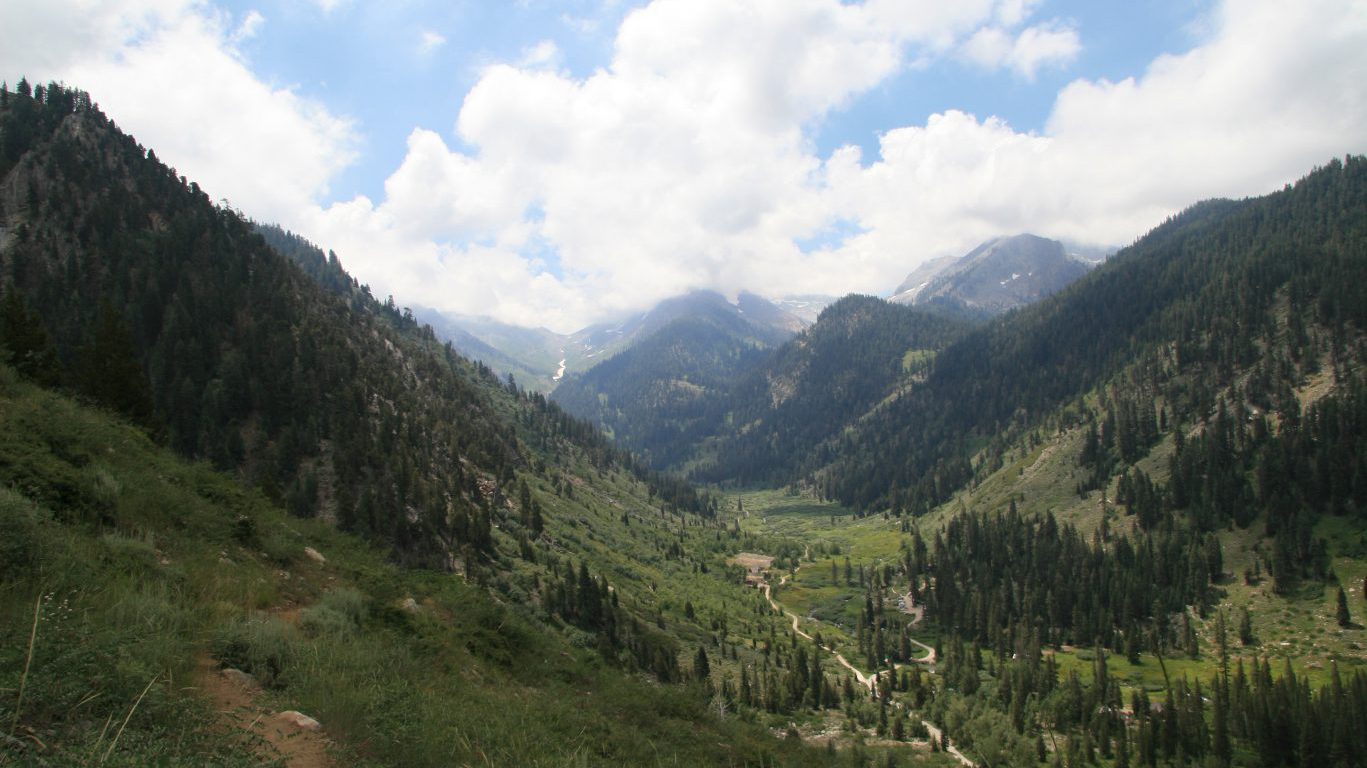
32. Plainview, California
> Poverty rate: 64.8%
> Median household income: $20,556
> Adults with a bachelor’s degree: 1.7%
> Total population: 887
Plainview is a Census designated place in central California. With a poverty rate of 64.8%, it is the poorest place in the state and one of the poorest nationwide. The area’s low incomes are partially due to lack of opportunity, as an average of 40% of the labor force have been unemployed over the last five years.
Lower-income areas often also have low educational attainment rates. In Plainview, only 1.7% of the 25 and older population have a bachelor’s degree or higher, and only 38.5% have a high school diploma.
[in-text-ad-2]
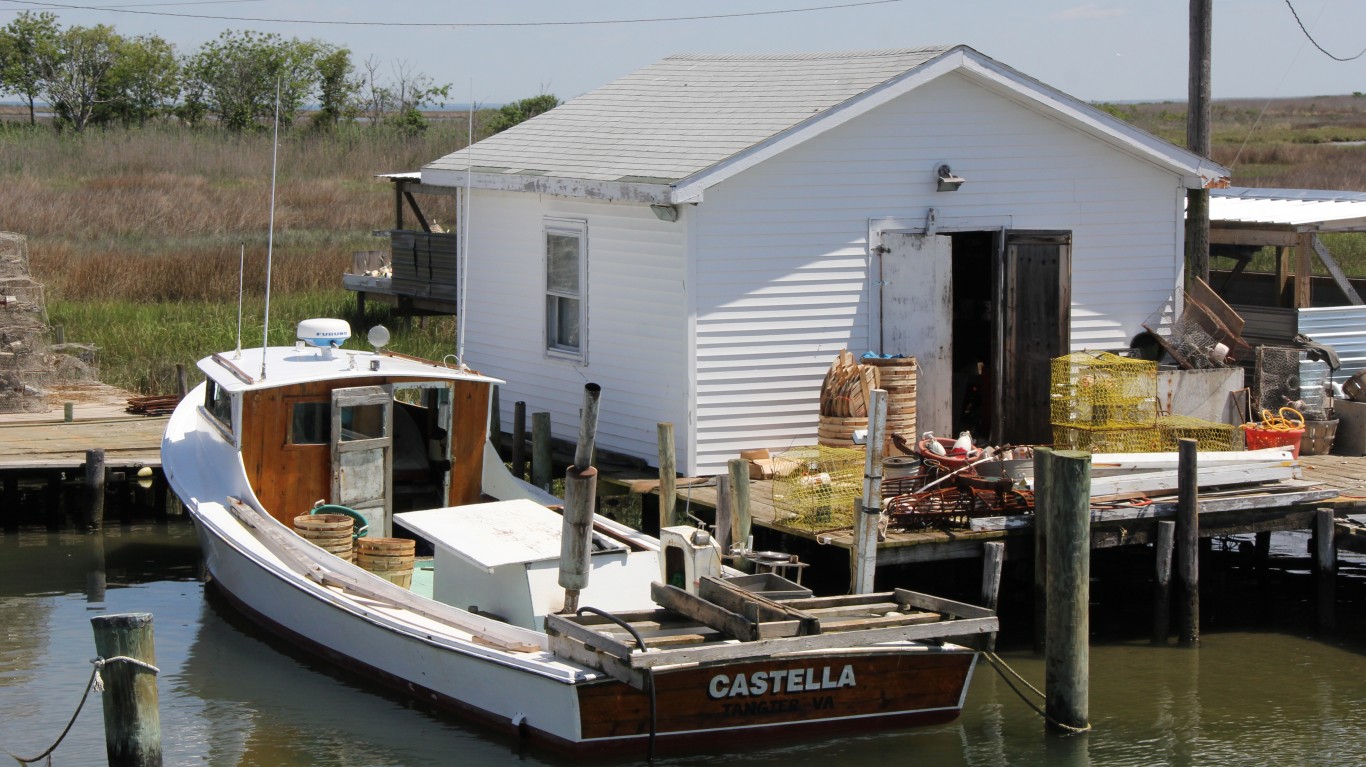
31. Pastoria, Virginia
> Poverty rate: 65.1%
> Median household income: $22,450
> Adults with a bachelor’s degree: 2.8%
> Total population: 996
Pastoria is an unincorporated community in Virginia located on the Delmarva Peninsula. The local poverty rate stands at 65.1% — nearly five times the comparable national rate.
As is often the case in low-income communities, Pastoria residents are far less likely than most Americans to have completed high school or gone to college. Just 60.6% of the local 25 and older population have a high school diploma, and 2.8% have a bachelor’s degree — compared to 88.0% and 32.1% of all American adults, respectively.

30. Citrus City, Texas
> Poverty rate: 65.1%
> Median household income: $16,818
> Adults with a bachelor’s degree: 2.3%
> Total population: 3,288
Located near the Mexican border, Citrus City is one of several south Texas communities to rank on this list. An estimated 65.1% of the area’s nearly 3,300 residents live below the poverty line, and most area households earn less than $17,000 a year.
The area lags behind much of the rest of the country in several other related socioeconomic measures. For example, less than half of the local 25 and older population have a high school diploma, and an average of over a quarter of the local labor force have been unemployed in the last five years.
[in-text-ad]
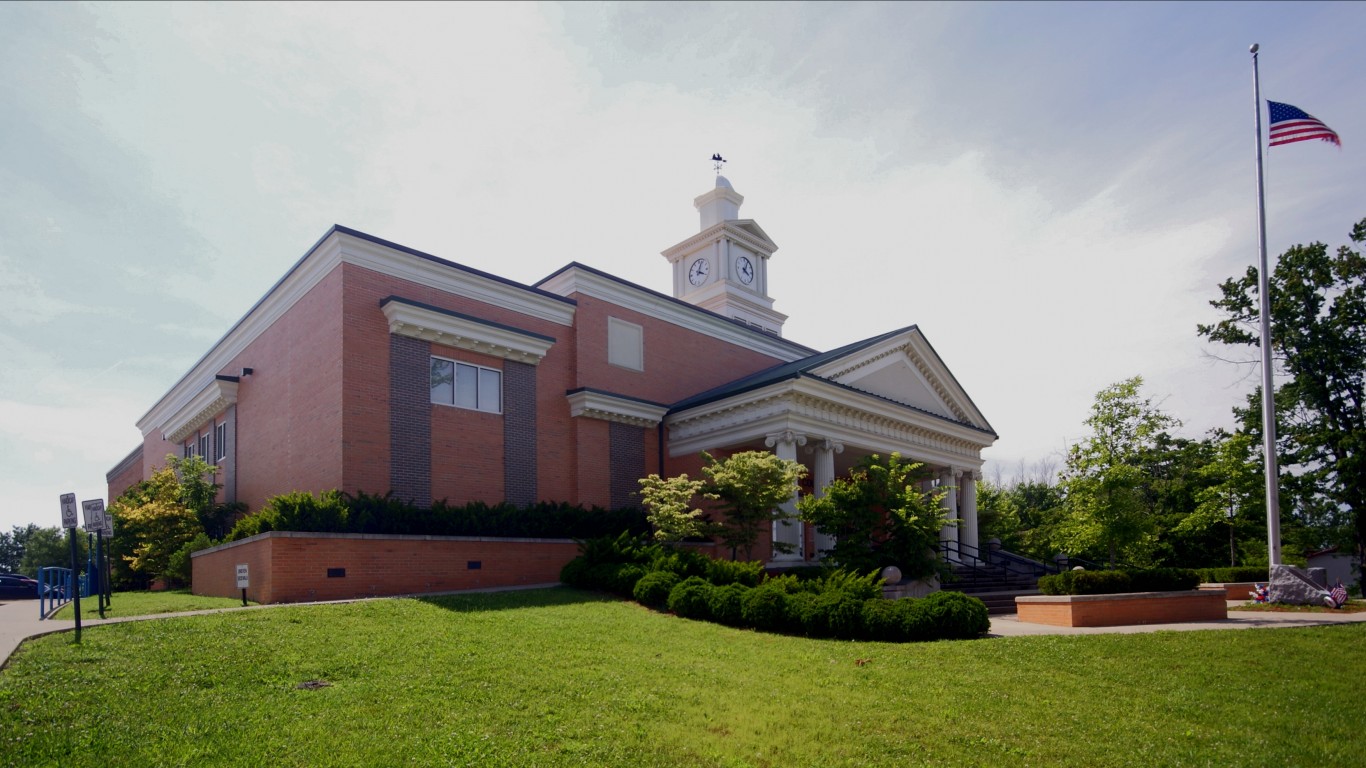
29. Whitley City, Kentucky
> Poverty rate: 65.1%
> Median household income: $15,270
> Adults with a bachelor’s degree: 10.9%
> Total population: 1,400
Whitley City, an unincorporated community in southern Kentucky, is one of the poorest places in the United States. Over 65% of the population live below the poverty line, and most households earn less than $16,000 a year.
Low incomes in the area are partially the result of the relatively small share of residents who are working. Only 38.5% of the local 16 and older population are in the labor force, well below the 63.4% national labor force participation rate.
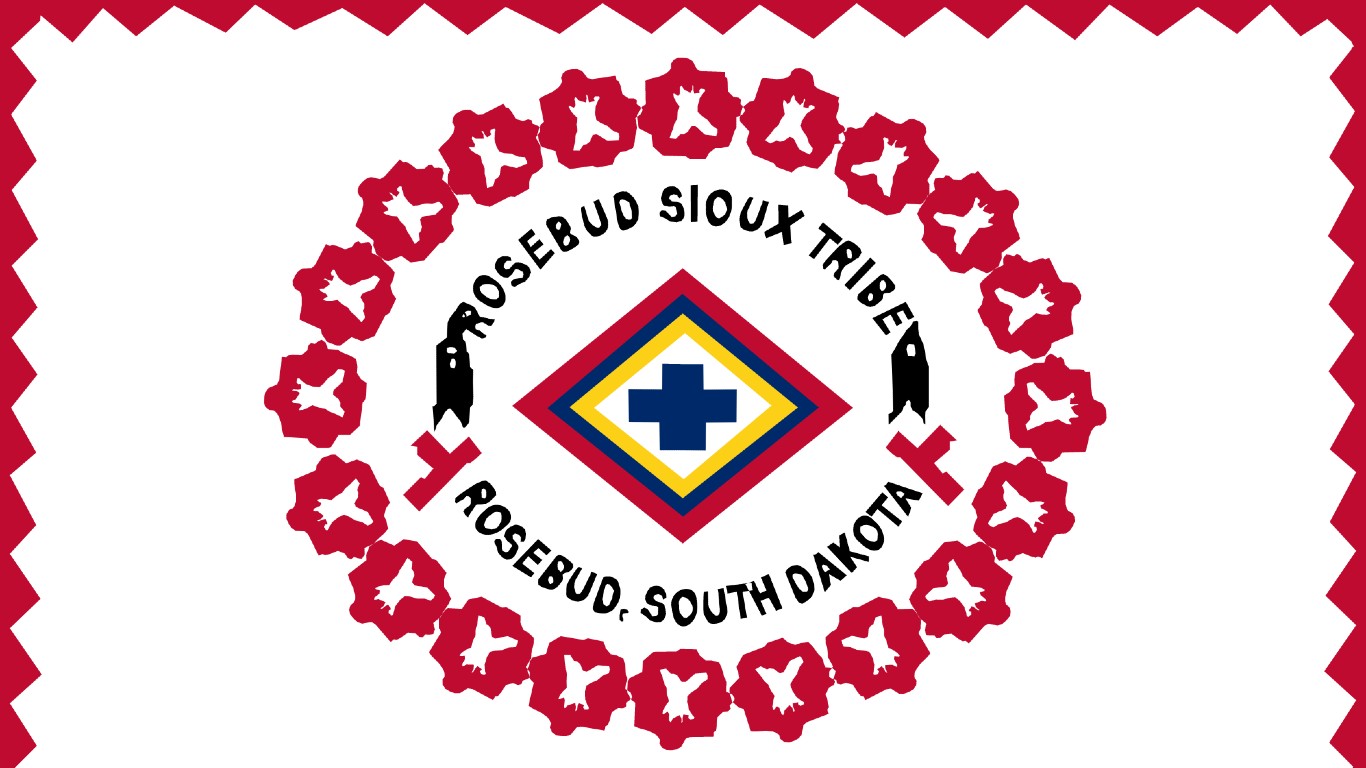
28. Antelope, South Dakota
> Poverty rate: 65.1%
> Median household income: $11,250
> Adults with a bachelor’s degree: 12.0%
> Total population: 900
Antelope, South Dakota, is a small Census designated place with a population of less than 1,000 located in the Rosebud Indian Reservation, home to the Lakota people. Like many predominantly Native American communities in the United States, Antelope is characterized by widespread economic hardship. The local poverty rate stands at 65.1%, and most households earn less than $12,000 a year.
The area’s low incomes are due in part to a lack of opportunity. The local five-year average unemployment rate stands at 19.0%, nearly quadruple the comparable national rate. Additionally, working-age residents are about half as likely to be working or looking for work than the typical working-age American nationwide.

27. Tucker, Mississippi
> Poverty rate: 65.3%
> Median household income: $00
> Adults with a bachelor’s degree: 0.0%
> Total population: 731
Tucker is one of the poorest communities in Mississippi. The local poverty rate of 65.3% is nearly five times higher than the national poverty rate.
For a number of historical and contemporary reasons, Native Americans are one of the most economically disadvantaged groups in the United States. One of many Choctaw communities in the state, each of the more than 700 residents of Tucker identifies as Native American.
[in-text-ad-2]

26. Whitecone, Arizona
> Poverty rate: 65.4%
> Median household income: $17,344
> Adults with a bachelor’s degree: 1.8%
> Total population: 871
Whitecone, Arizona, is an unincorporated community with a population of about 900 people in the Navajo Nation. One of the poorest places in the country, nearly one in every three residents live below the poverty line.
Native American communities, like Whitecone, are often among the most economically disadvantaged in the United States. An average of 29.4% of the local labor force have been unemployed in the last five years, well above the comparable 5.3% national jobless rate.
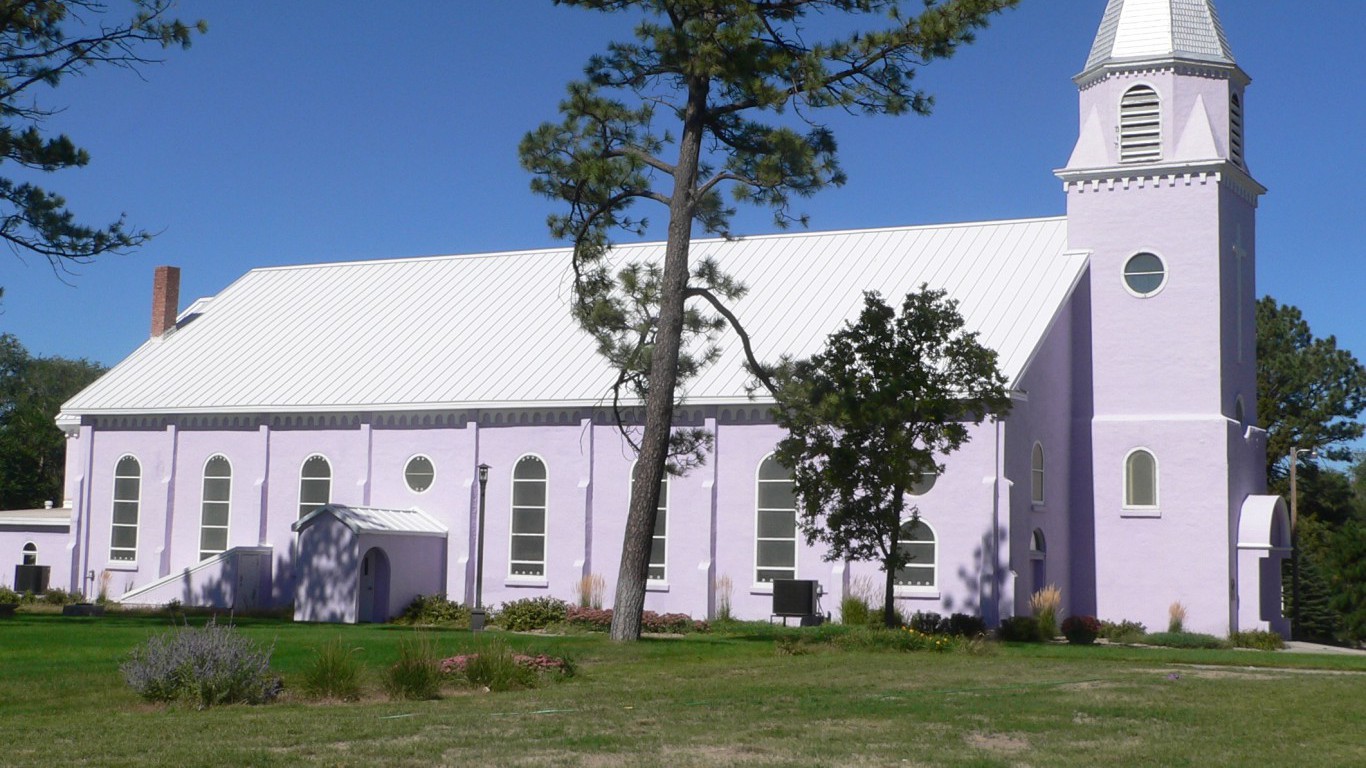
25. St. Francis, South Dakota
> Poverty rate: 65.7%
> Median household income: $15,833
> Adults with a bachelor’s degree: 11.7%
> Total population: 654
St. Francis, South Dakota, is a small town of about 650 located in the Rosebud Indian Reservation. The local poverty rate stands at nearly 66%, and most households in the area earn less than $16,000 a year.
Like many of America’s poorest communities, St. Francis has a large Native American population, a population disproportionately shoulders the economic hardship — both locally and nationwide. In St. Francis, the typical Native American household earns just $13,125 a year, while the typical white household earns $37,500 annually.
[in-text-ad]
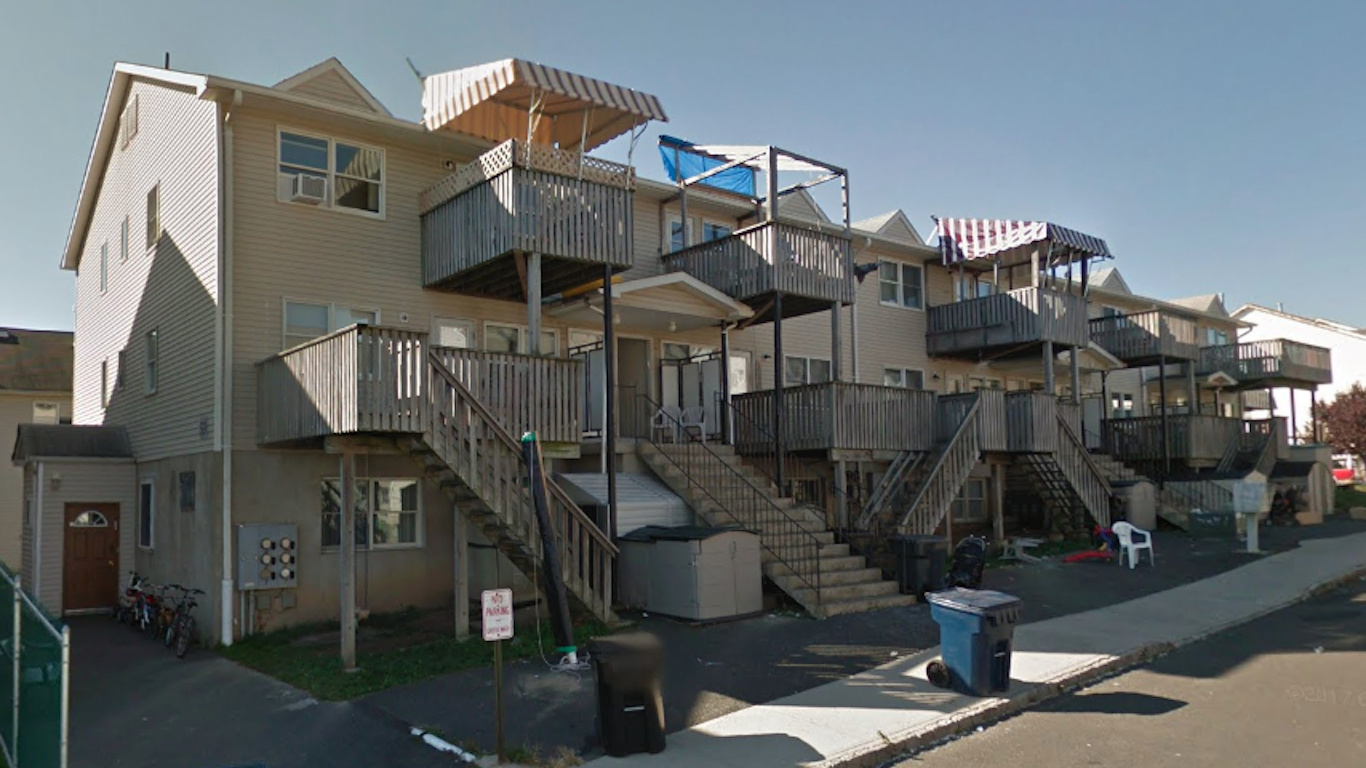
24. New Square, New York
> Poverty rate: 65.9%
> Median household income: $23,730
> Adults with a bachelor’s degree: 3.7%
> Total population: 8,373
New Square, New York, is a primarily Hasidic Jewish village in Rockland County, about 30 miles north of Midtown Manhattan. One of only three communities in New York state to rank on this list, New Square has a poverty rate of 65.9%.
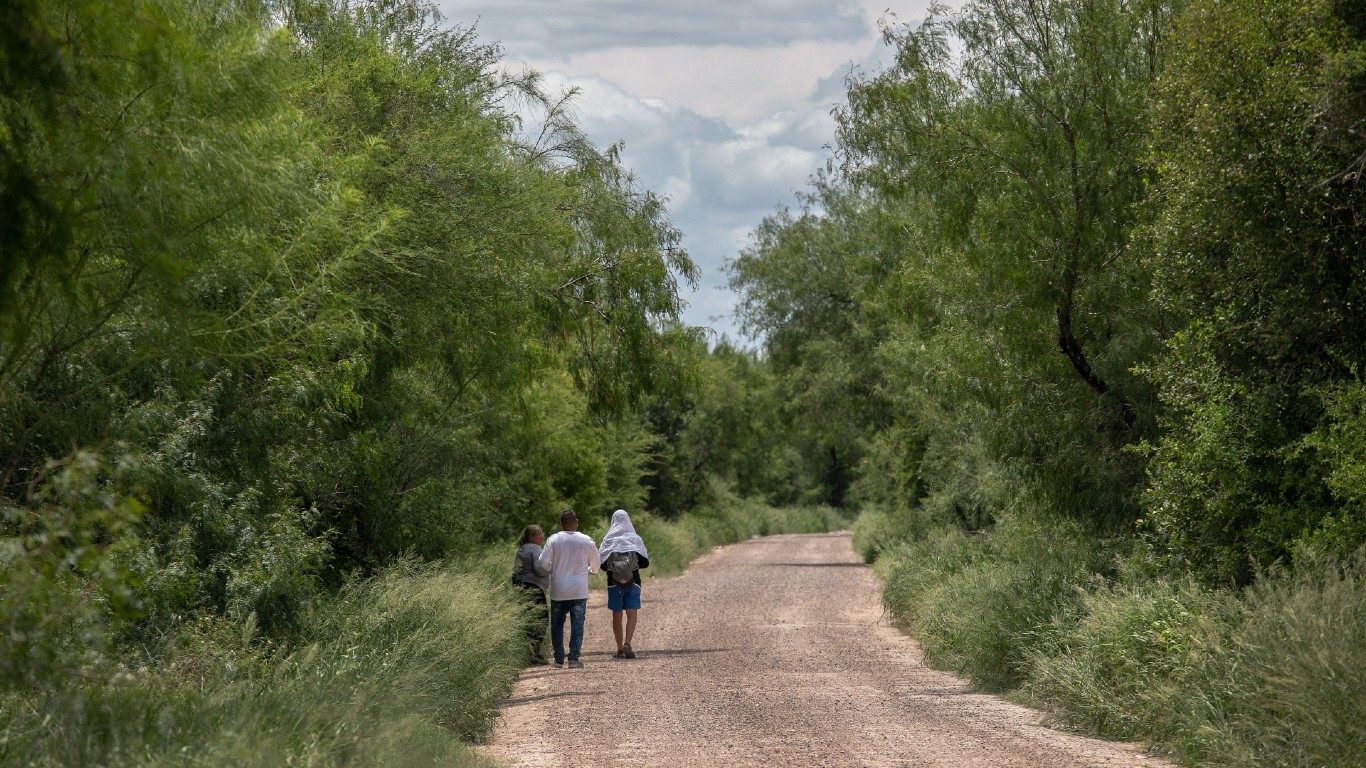
23. Hargill, Texas
> Poverty rate: 66.0%
> Median household income: $24,095
> Adults with a bachelor’s degree: 5.3%
> Total population: 963
Hargill is a small Census designated place in southern Texas with a population of about 1,000 people. Not including college towns, the area is one of only 24 nationwide with a poverty rate of 66% or higher.
Most of the population identify as Hispanic or Latino, and like many demographically similar communities in southern Texas, educational attainment rates are low in Hargill. Hispanic and Latino populations often face considerable social and economic hurdles to education, which ultimately limit their employment opportunities. In Hargill, just 41.2% of adults have a high school diploma and 5.3% have a bachelor’s degree.
22. Cibecue, Arizona
> Poverty rate: 66.1%
> Median household income: $15,417
> Adults with a bachelor’s degree: 2.6%
> Total population: 2,173
Cibecue, Arizona, is an unincorporated community of about 2,200 located in the Fort Apache Indian Reservation. The local poverty rate stands at a near nation-leading 66.1%.
As is the case in many low-income areas with large Native American populations, economic opportunities are scarce in Cibecue. Only 39.6% of the 16 and older population participate in the labor force, compared to 63.4% of all Americans in the same age group, and the local five year average unemployment rate stands at 23.5%.
[in-text-ad-2]
21. Fort Totten, North Dakota
> Poverty rate: 66.3%
> Median household income: $22,917
> Adults with a bachelor’s degree: 2.0%
> Total population: 1,247
Fort Totten, North Dakota, located in the Spirit Lake Reservation, has a poverty rate of 66.3% — the highest in the state. Additionally, most households in Fort Totten earn less than $23,000 a year.
Like many of the poorest communities in the United States, Fort Totten’s residents are largely Native American — one of the most economically disadvantaged demographics in the United States. One reason is a lack of economic opportunities on Indian reservations. In Fort Totten, an average of 15.2% of the labor force have been unemployed in the last five years, nearly triple the comparable national average.
20. Rosebud, South Dakota
> Poverty rate: 67.1%
> Median household income: $19,453
> Adults with a bachelor’s degree: 8.1%
> Total population: 1,703
Rosebud, South Dakota, located in the Rosebud Indian Reservation, is one of only 21 places in the United States — excluding college towns — where more than two in every three residents live below the poverty line.
Poverty in Native American communities is often a product of historical and contemporary factors that have resulted in high unemployment and low educational attainment. In Rosebud, only 8.1% of the adult population have a bachelor’s degree, compared to 32.1% of American adults nationwide, and likely due to a lack of opportunity, working-age residents are less than half as likely to be working or looking for work as the typical American nationwide in the same age group.
[in-text-ad]
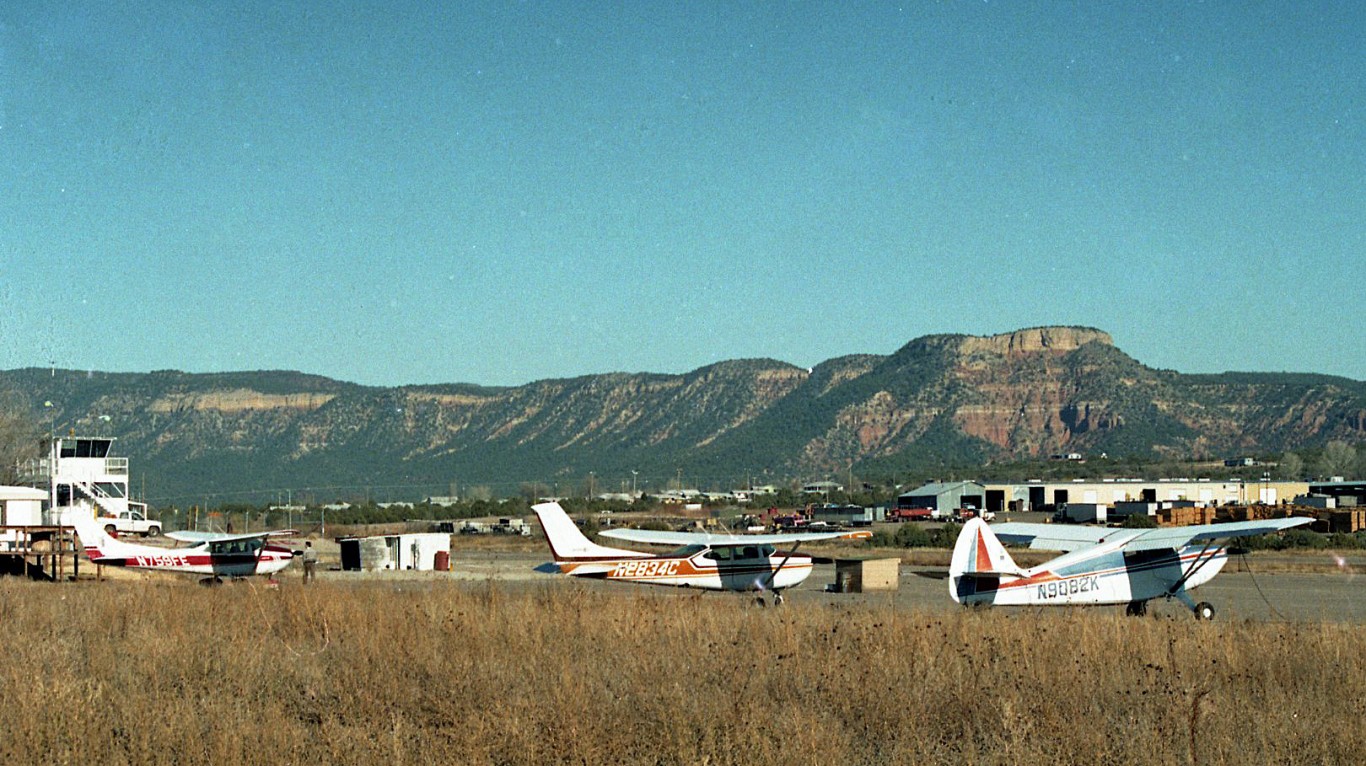
19. Nazlini, Arizona
> Poverty rate: 67.4%
> Median household income: $9,542
> Adults with a bachelor’s degree: 9.3%
> Total population: 522
Nazlini is a predominantly Native American community in Apache County, Arizona. One of the poorest places in the United States, the local poverty rate stands at 67.4%, and most households earn less than $10,000 a year.
Native Americans are among the most economically disadvantaged groups in the United States, and economic opportunities are scarce in Nazlini. Only 25.9% of the 16 and older population are working or looking for work, well below the 63.4% national labor force participation rate.
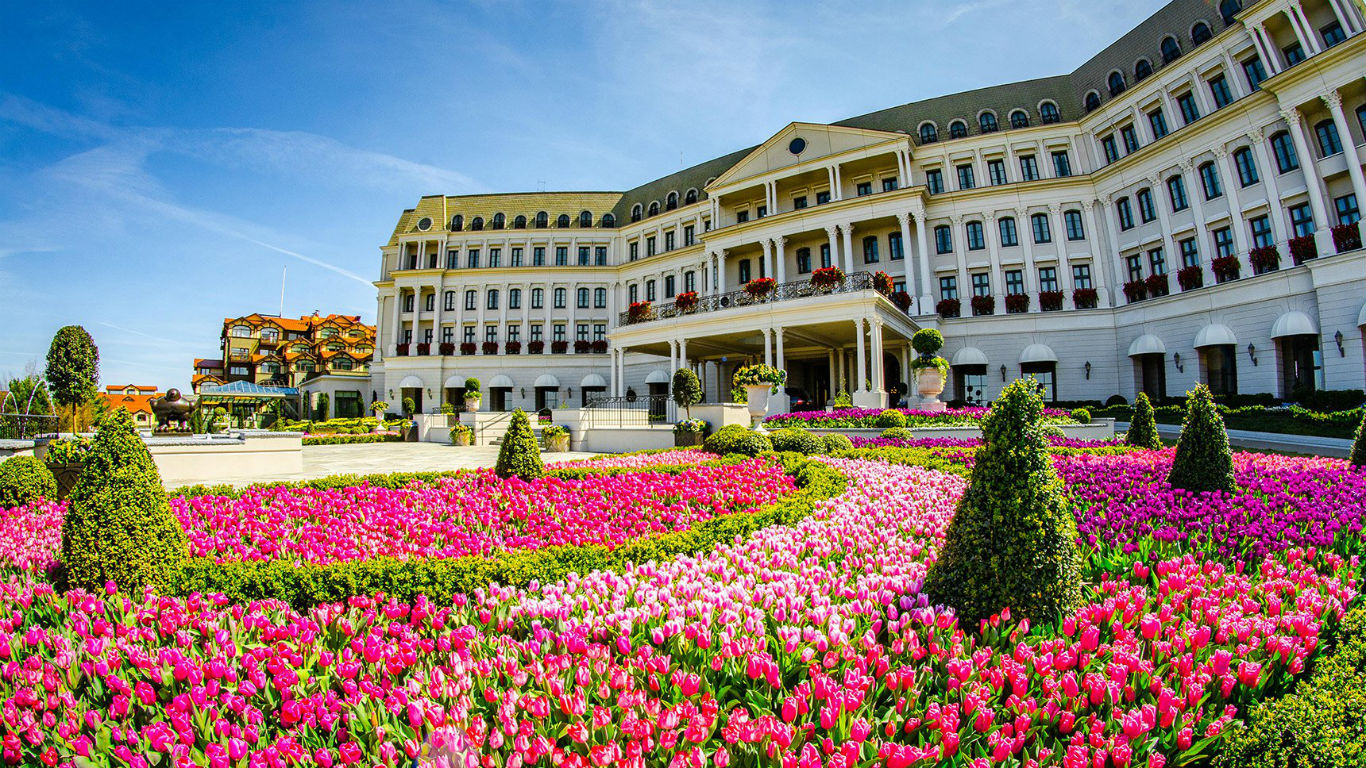
18. Farmington, Pennsylvania
> Poverty rate: 67.5%
> Median household income: $66,063
> Adults with a bachelor’s degree: 21.0%
> Total population: 964
Farmington is a small unincorporated community in southwestern Pennsylvania. The local poverty rate of 67.5% is five times higher than the comparable national average.
As is often the case in high-poverty areas, labor force participation is low in Farmington. Just 20.7% of the 16 and older population are either working or looking for work, about one-third the 63.4% national labor force participation rate.

17. Indian Hills, Texas
> Poverty rate: 68.6%
> Median household income: $23,117
> Adults with a bachelor’s degree: 0.0%
> Total population: 3,001
Indian Hills is one of several Census designated places in southern Texas to rank on this list. The local poverty rate of 68.6% is one of the highest in the United States.
Indian Hills is a largely Hispanic and Latino community, and social and economic barriers to education faced by those demographics likely help explain the widespread poverty. A high school education is fundamental to employment opportunities, and in Indian Hills, only 27.6% of the 25 and older population have a high school diploma.
[in-text-ad-2]
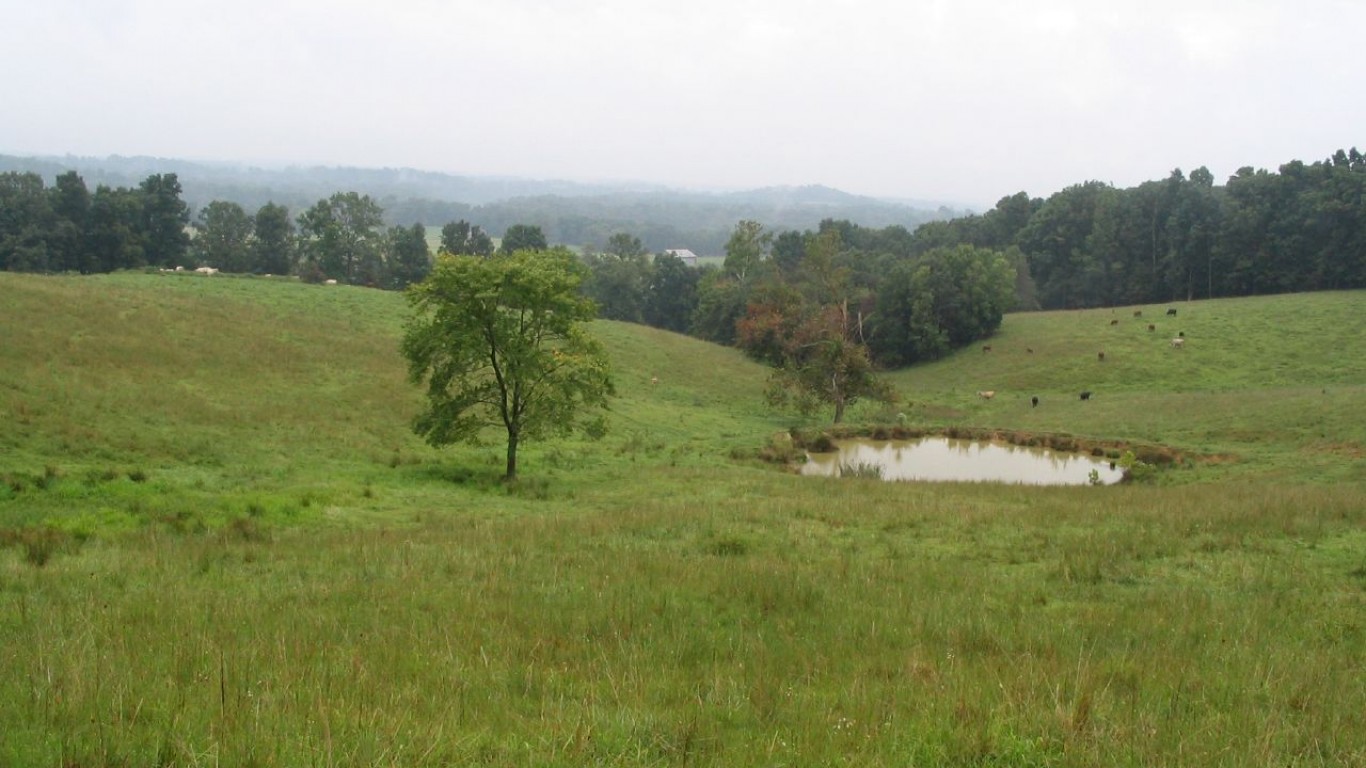
16. Breckinridge Center, Kentucky
> Poverty rate: 69.1%
> Median household income: $43,750
> Adults with a bachelor’s degree: 1.3%
> Total population: 2,109
Breckinridge Center is an unincorporated community in western Kentucky. The local poverty rate of 69.1% is the highest in the state, not counting college and university towns, and over five times the comparable national poverty rate.
As is often the case in the poorest communities in the United States, economic opportunities are few and far between in Breckinridge Center. More than one in every four members of the labor force are unemployed.
15. Wanblee, South Dakota
> Poverty rate: 69.1%
> Median household income: $23,250
> Adults with a bachelor’s degree: 9.8%
> Total population: 975
Wanblee, South Dakota, is a Census designated place in the Pine Ridge Reservation. Nearly all of the 975 local residents are members of the Lakota Sioux tribe. For a variety of historical and contemporary reasons, Native Americans living on reservations are among the most likely groups to face serious economic hardship. In Wanblee, the poverty rate is 69.1%, nearly the highest in the United States.
As is the case in many poor Native American communities, economic opportunities are limited in Wanblee. Only 28.2% of the 16 and older population participate in the labor force, and among those who do, 25.6% are unemployed.
[in-text-ad]
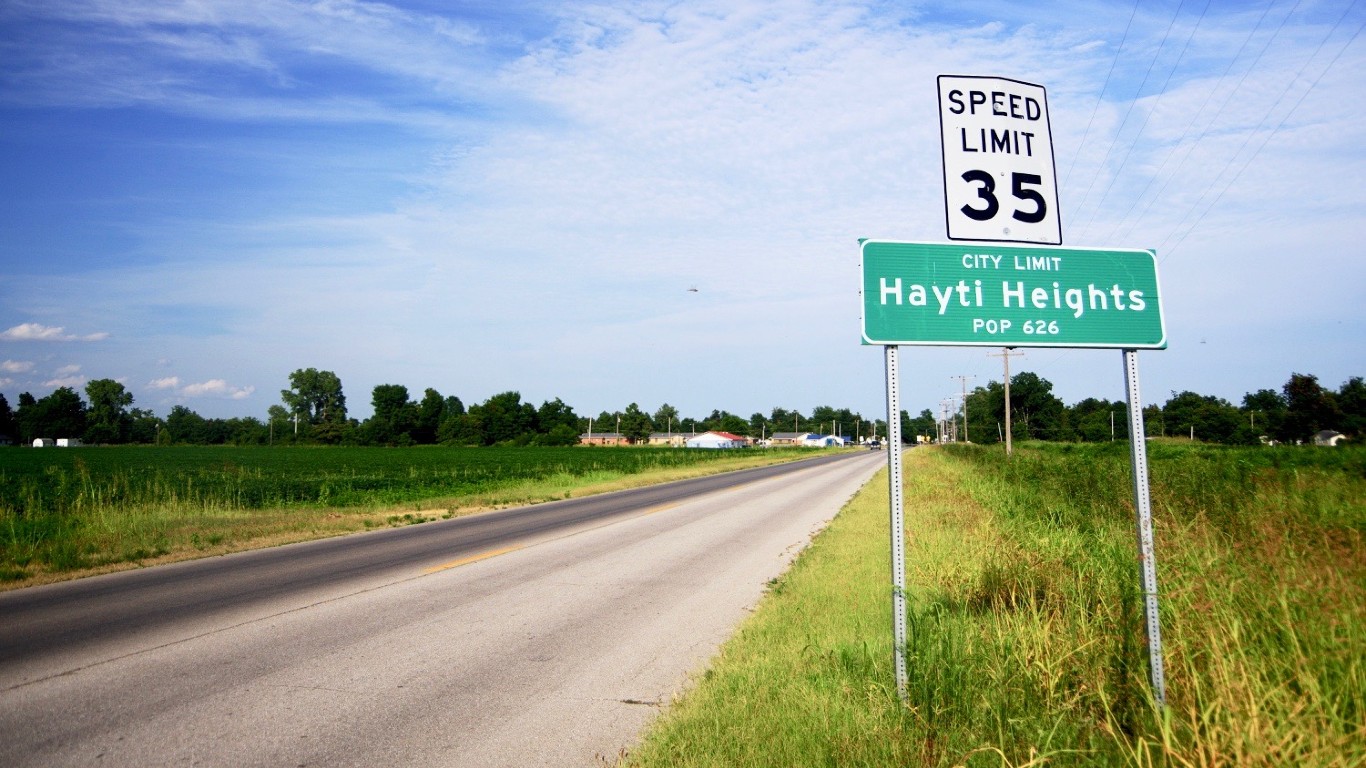
14. Hayti Heights, Missouri
> Poverty rate: 69.8%
> Median household income: $20,536
> Adults with a bachelor’s degree: 3.3%
> Total population: 537
Nearly 70% of the population of Hayti Heights, Missouri, live in poverty, higher than any other place in Missouri and one the three poorest in the Midwest. The typical household in the city, which is located in the state’s Bootheel, has an annual income of just $20,536, which is barely one-third the national median household income of $62,843.
A college education is a good indicator of the wealth and earning potential of a population, and those without such education are less likely to work in higher-income jobs and maintain steady employment. In Hayti Heights, just 3.3% of the adult population have a bachelor’s degree, compared to 32.1% of the U.S. 25 and over population.

13. Kaser, New York
> Poverty rate: 70.8%
> Median household income: $21,541
> Adults with a bachelor’s degree: 3.8%
> Total population: 5,262
Kaser, New York, is one of only 14 communities in the United States, excluding college and university towns, where over 70% of the population live below the poverty line.
The village, like many low-income communities, has low educational attainment rates. Just 3.8% have a bachelor’s degree or higher, well below the comparable 32.1% national rates.

12. Las Palmas II, Texas
> Poverty rate: 73.1%
> Median household income: $12,453
> Adults with a bachelor’s degree: 0.0%
> Total population: 1,783
Las Palmas II is a Census designated place in Texas located near Harlingen on the state’s southern border. It is not to be confused with the CDP of Las Palmas, which is in nearby Zapata County. One of the poorest places in the country, 73.1% of the area’s population live in poverty, and the typical household has an income of just $12,453.
The area is one of the few places in the country where, according to the Census Bureau, none of the population 25 years of age or older have a bachelor’s degree.
[in-text-ad-2]
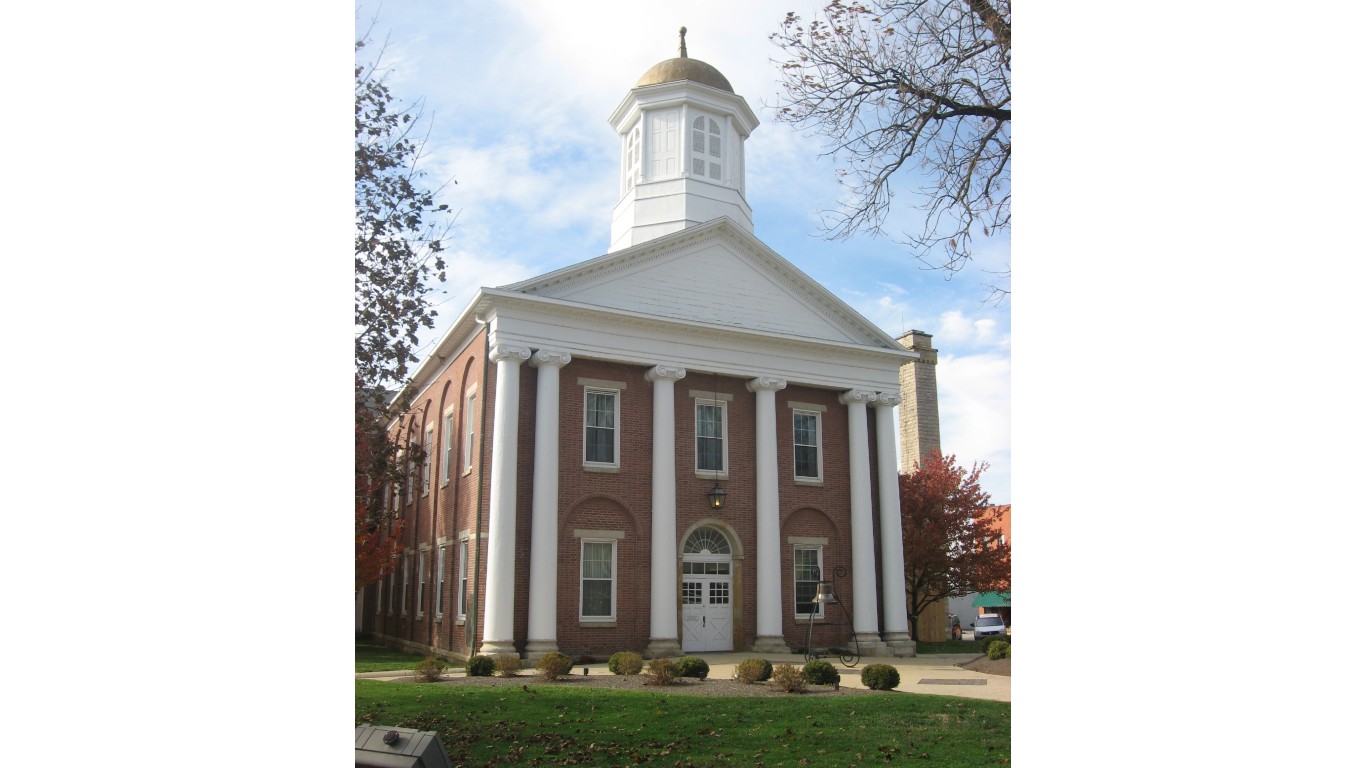
11. Highland Holiday, Ohio
> Poverty rate: 73.9%
> Median household income: $21,250
> Adults with a bachelor’s degree: 0.0%
> Total population: 510
Highland Holiday is an unincorporated community in southern Ohio. One of the poorest places in the United States, Highland Holiday’s poverty rate of 73.9% is five and a half times higher than the national poverty rate.
Low-income areas typically have limited economic opportunities. While in Highland Holiday, unemployment is slightly higher than it is nationwide, a lack of jobs is likely discouraging residents from even looking in the first place. Only 31.6% of the 16 and older population are working or looking for work, half the national labor force participation rate of 63.4%.

10. Mikes, Texas
> Poverty rate: 74.7%
> Median household income: $20,481
> Adults with a bachelor’s degree: 0.0%
> Total population: 897
Mikes, Texas, a Census designated place in Starr County, is near the state’s southern border — like several other places on this list. Close to three in every four of the roughly 900 residents of Mikes live below the poverty line. It is one of the only places in the United States where, according to Census data, none of the residents 25 or older hold a bachelor’s degree. Just 6.1% of the adult population even have a high school diploma, compared to 88% of American adults.
Those with lower education attainment are less likely to find high-paying work or hold steady employment. An average of over 20% of the Mikes CDP labor force were unemployed over the last five years, compared to the 5.3% national rate.
[in-text-ad]
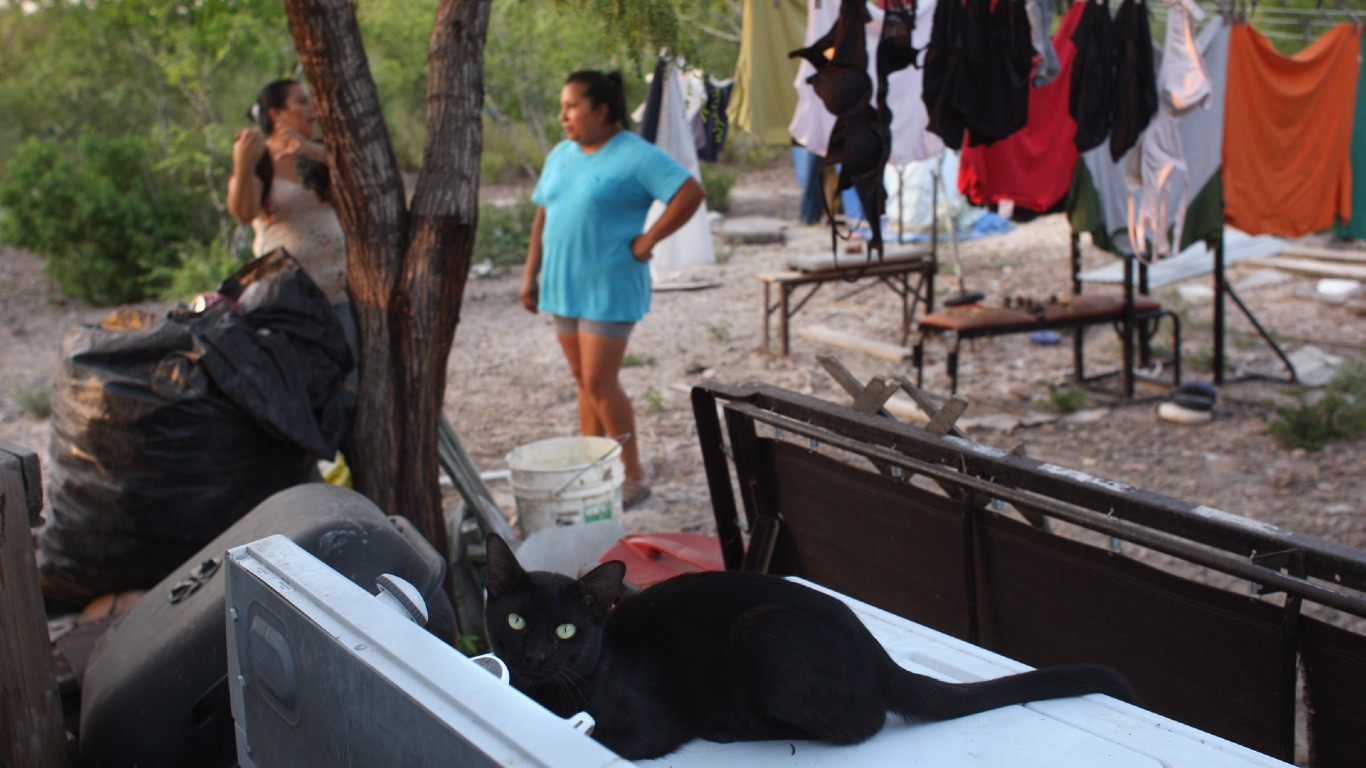
9. La Tina Ranch, Texas
> Poverty rate: 76.3%
> Median household income: $13,662
> Adults with a bachelor’s degree: 0.0%
> Total population: 666
La Tina Ranch is a Census designated place in southern Texas. It is one of only nine communities in the United States — excluding college and university towns — where more than three in every four residents live below the poverty line.
Like many poor communities in southern Texas, La Tina Ranch has a large Hispanic and Latino population — a group that often faces considerable hurdles to educational attainment. In La Tina Ranch, less than 70% of the 25 and older population have a high school diploma.
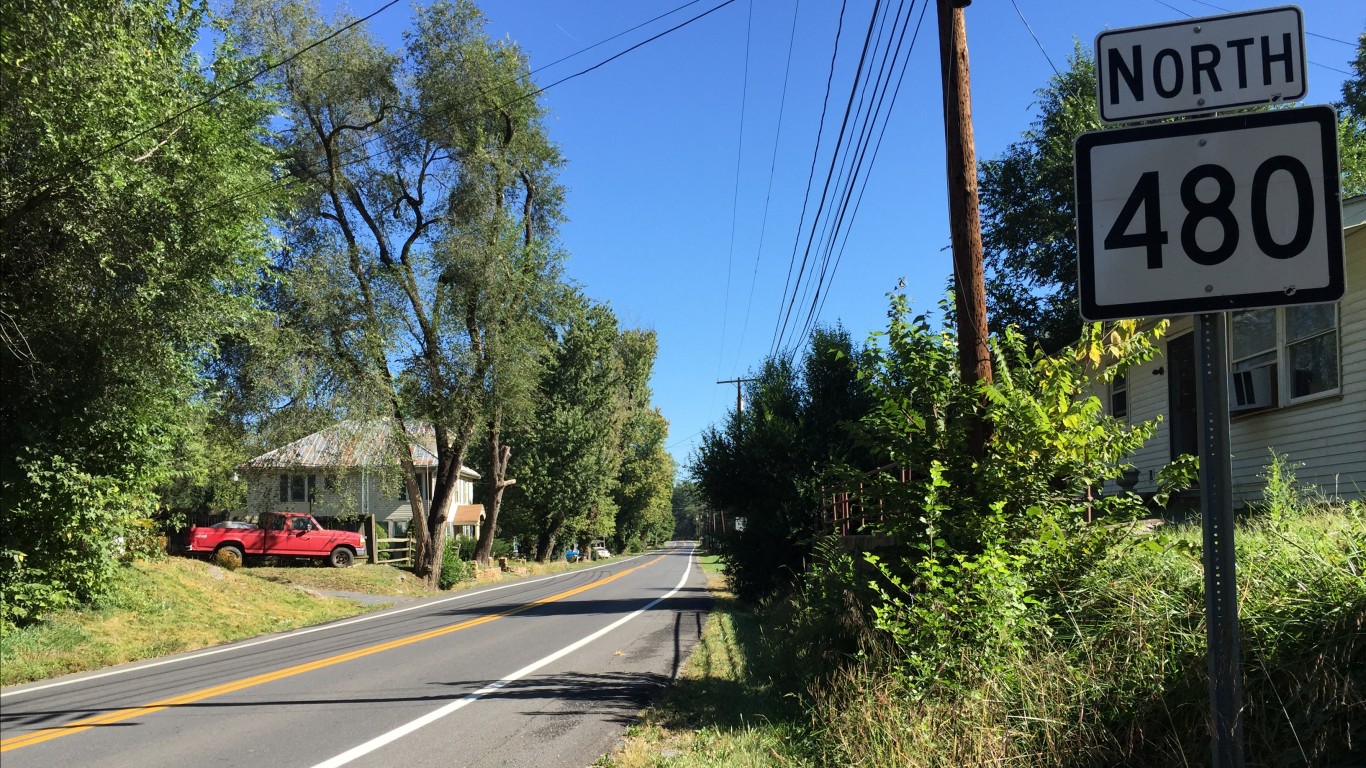
8. Jefferson, West Virginia
> Poverty rate: 77.8%
> Median household income: $19,201
> Adults with a bachelor’s degree: 4.2%
> Total population: 630
Jefferson is the poorest place in West Virginia and one of the poorest in the United States. The local poverty rate of 77.8% is nearly six times the comparable national rate.
Located in a coal-producing region, Jefferson is one of many communities across the state where declining coal production has had economically devastating effects. Only about a quarter of the local 16 and older population participate in the labor force, and an average of 20.5% of all participants were unemployed in the last five years.
7. Alamo, New Mexico
> Poverty rate: 78.1%
> Median household income: $19,615
> Adults with a bachelor’s degree: 3.1%
> Total population: 851
Alamo, New Mexico, is an unincorporated community in the Alamo Navajo Indian Reservation. Conditions in reservations are often not conducive to economic prosperity, and in Alamo, nearly 80% of the population live below the poverty line.
Low educational achievement is one of many factors that contribute to widespread poverty in many Native American communities. In Alamo, only about half of all adults have a high school diploma, and just 3.1% have a bachelor’s degree or higher.
[in-text-ad-2]
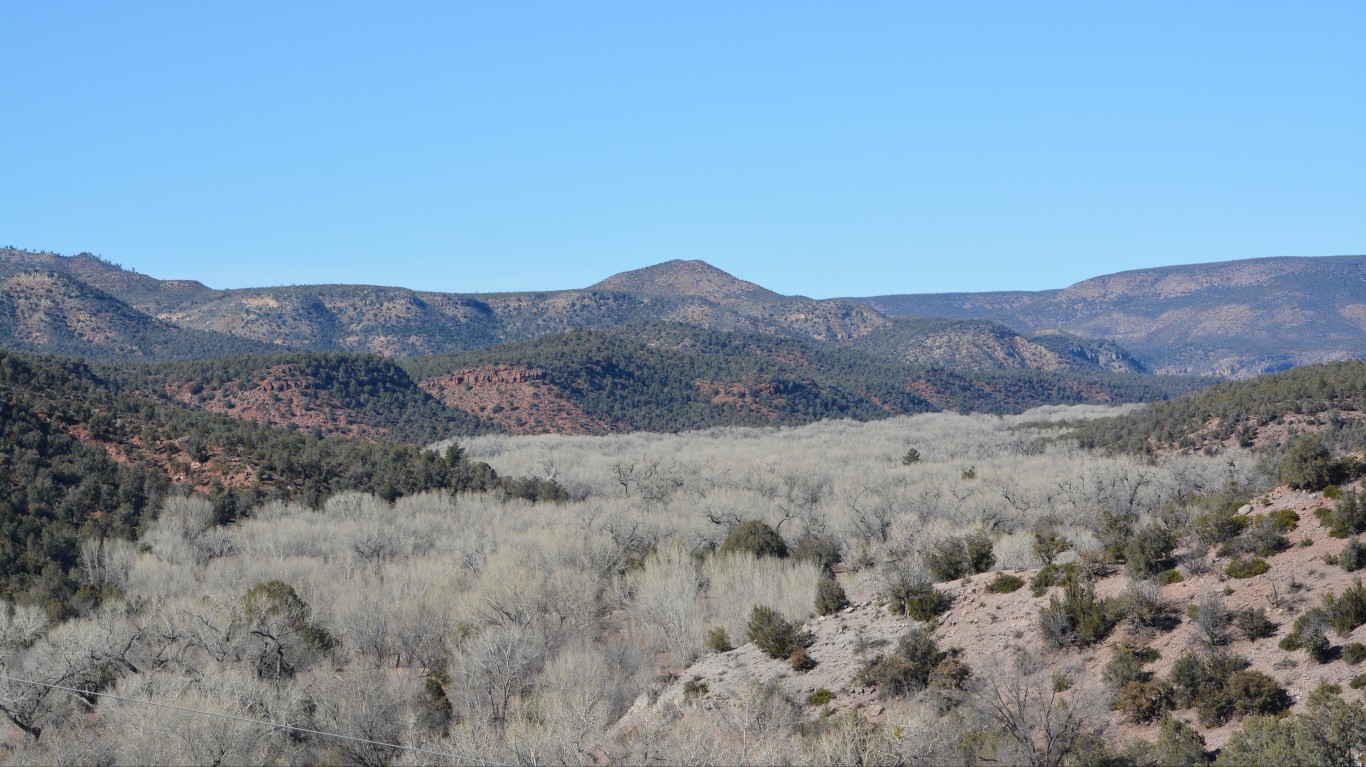
6. Round Valley, Arizona
> Poverty rate: 81.8%
> Median household income: $20,673
> Adults with a bachelor’s degree: 10.0%
> Total population: 754
Round Valley, Arizona, is one of only six communities in the United States — excluding college and university towns — where more than four in every five residents live below the poverty line.
Low-income areas typically have limited economic opportunities, and in Round Valley, a lack of jobs is likely discouraging residents from even looking in the first place. Only 39.1% of the 16 and older population are working or looking for work, half the national labor force participation rate of 63.4%.

5. Calvert, Alabama
> Poverty rate: 83.6%
> Median household income: $27,148
> Adults with a bachelor’s degree: 10.1%
> Total population: 609
The poorest community in Alabama is Calvert, a Census designated place in the southwestern part of the state. An estimated 83.6% of the local population live below the poverty line, more than six times the national poverty rate.
A high school education is a prerequisite for the vast majority of employment opportunities in the United States. In Calvert, only about one in every three residents who are 25 and older have a high school diploma, compared to 88% of American adults nationwide.
[in-text-ad]
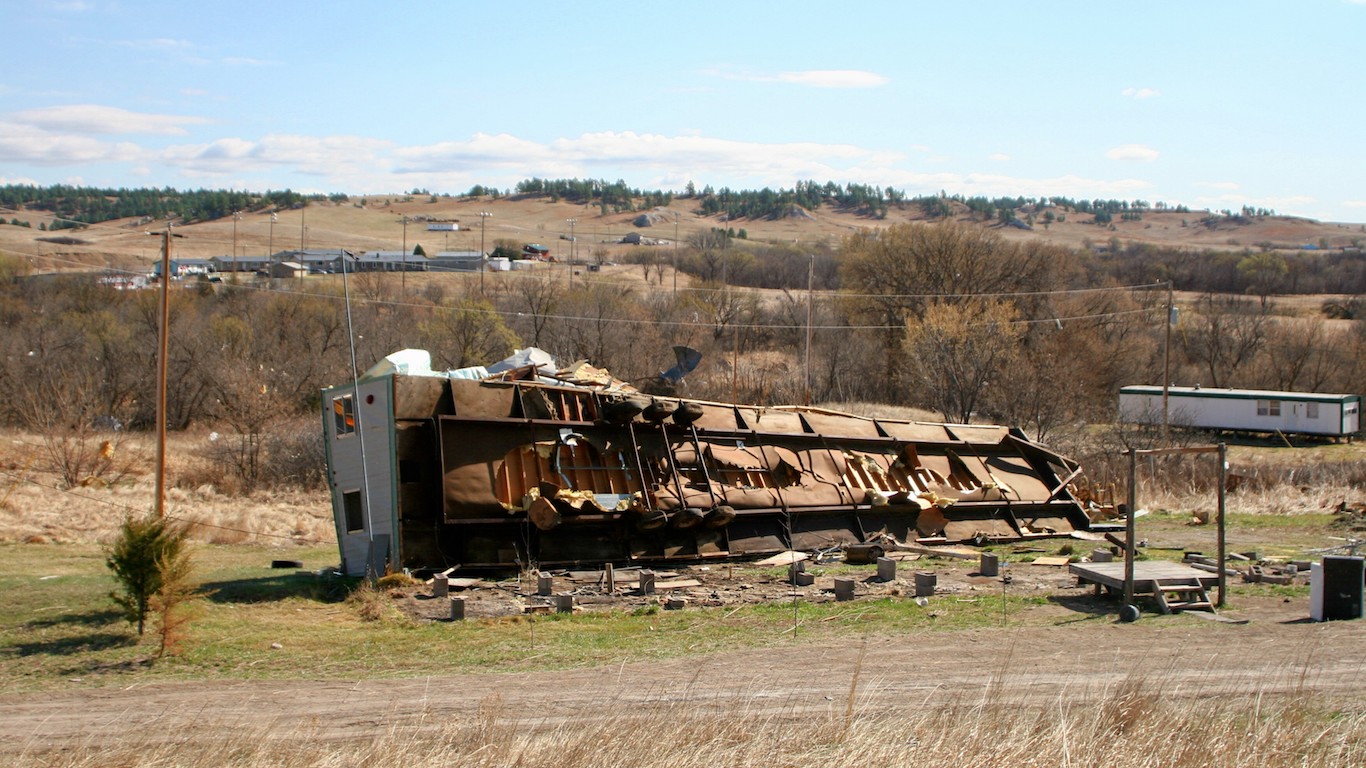
4. Porcupine, South Dakota
> Poverty rate: 89.8%
> Median household income: $16,964
> Adults with a bachelor’s degree: 5.9%
> Total population: 1,470
Porcupine, South Dakota, is part of the Pine Ridge reservation where part of the Oglala Lakota Nation resides, and 85% of the Census designated place’s population identify as American Indian.
Like many predominantly Native American communities in the United States, Porcupine is characterized by widespread poverty and other socioeconomic issues. Only roughly 1 in 10 residents live on incomes above the Federal poverty line, and the typical household has an income of about $17,000.

3. Mi Ranchito Estate, Texas
> Poverty rate: 90.2%
> Median household income: N/A
> Adults with a bachelor’s degree: 0.0%
> Total population: 602
Mi Ranchito Estate, Texas, is one of only three communities in the United States — excluding college and university towns — where more than 90% residents live below the poverty line.
Like many other poor areas in Texas, Mi Ranchito Estate is home to a large Hispanic and Latino population — a group that often faces considerable social and economic hurdles to education and employment in the United States. In Mi Ranchito, only 20.5% of the adult population have a high school diploma, and the five-year average unemployment rate stands at 62.9%. Nationwide, 88% of adults have a high school education, and an average of only 5.3% of the labor force have been unemployed in the last five years.

2. Watchtower, New York
> Poverty rate: 92.0%
> Median household income: N/A
> Adults with a bachelor’s degree: 16.8%
> Total population: 2,117
Watchtower is a Census designated place in Ulster County, New York. With a poverty rate of 92%, it is the second poorest place nationwide, excluding college and university towns.
Virtually none of the 2,117 people who live in the hamlet work a typical job or are looking for one. Just 3.3% of the local 16 and older population are in the labor force, a fraction of the 63.4% national labor force participation rate.
[in-text-ad-2]
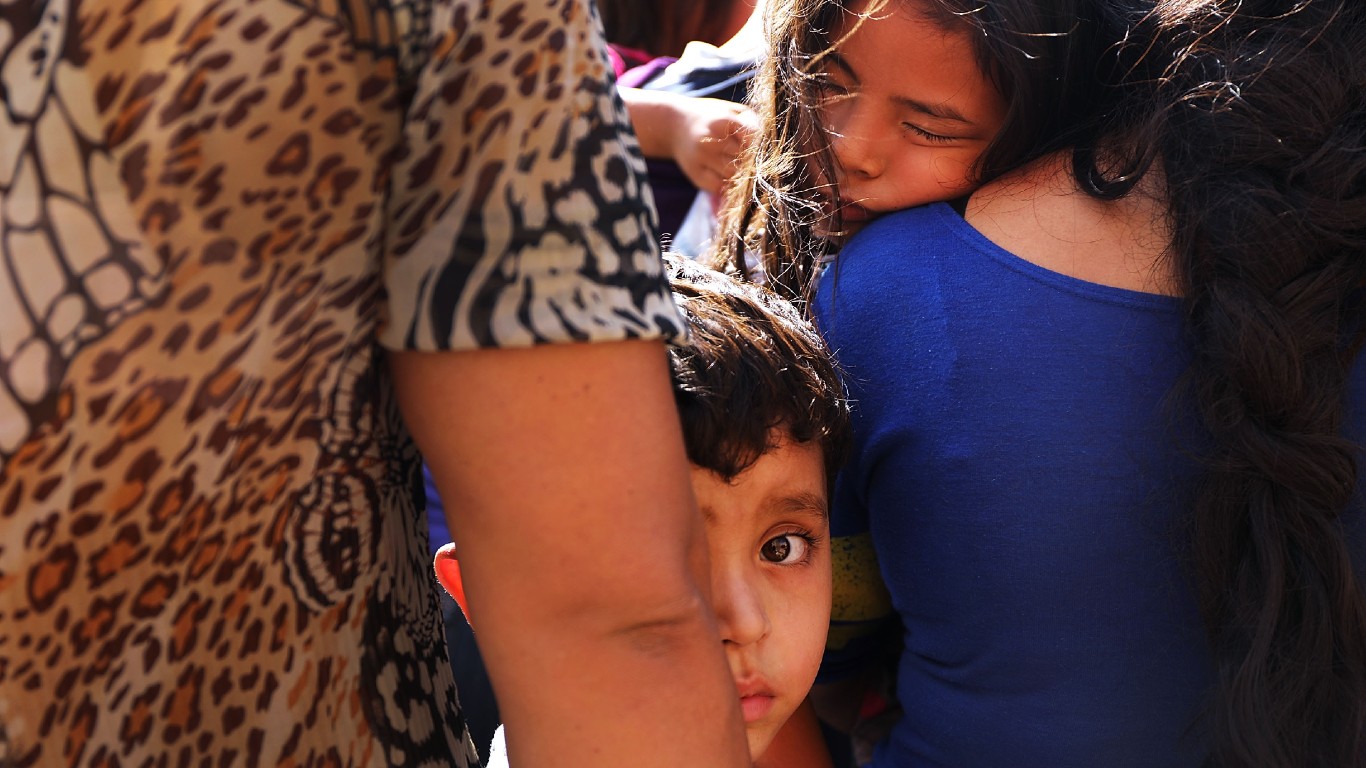
1. South La Paloma, Texas
> Poverty rate: 92.5%
> Median household income: $35,068
> Adults with a bachelor’s degree: 0.0%
> Total population: 530
Excluding college and university towns, South La Paloma, Texas, is the poorest place in the United States. The southern Texas community, located about 40 miles west of Corpus Christi, has a poverty rate of 92.5% — nearly seven times higher than the national 13.4% poverty rate.
Like many other poor areas in Texas, South La Paloma is home to a large Hispanic and Latino population — a demographic that often faces considerable social and economic hurdles to education and employment opportunities in the United States. In South La Paloma, only 48% of the adult population have a high school diploma, compared to 88% of adults nationwide.
Methodology
To identify the poorest places in the country, 24/7 Wall St. reviewed the poverty rate — the percentage of all people who live in poverty — in the approximately 20,000 places with 500 or more residents using data from the U.S. Census Bureau’s 2019 American Community Survey. The areas reviewed include cities, towns, as well as unincorporated areas known as Census Designated Places, or CDPs. These are the 50 places with the highest poverty rates. Each area’s median household income and population totals also came from the ACS. All data are 5-year averages through 2019. We only considered places where less than 25% of the population are enrolled in college or graduate school.
Are You Still Paying With a Debit Card?
The average American spends $17,274 on debit cards a year, and it’s a HUGE mistake. First, debit cards don’t have the same fraud protections as credit cards. Once your money is gone, it’s gone. But more importantly you can actually get something back from this spending every time you swipe.
Issuers are handing out wild bonuses right now. With some you can earn up to 5% back on every purchase. That’s like getting a 5% discount on everything you buy!
Our top pick is kind of hard to imagine. Not only does it pay up to 5% back, it also includes a $200 cash back reward in the first six months, a 0% intro APR, and…. $0 annual fee. It’s quite literally free money for any one that uses a card regularly. Click here to learn more!
Flywheel Publishing has partnered with CardRatings to provide coverage of credit card products. Flywheel Publishing and CardRatings may receive a commission from card issuers.
Thank you for reading! Have some feedback for us?
Contact the 24/7 Wall St. editorial team.

 24/7 Wall St.
24/7 Wall St.
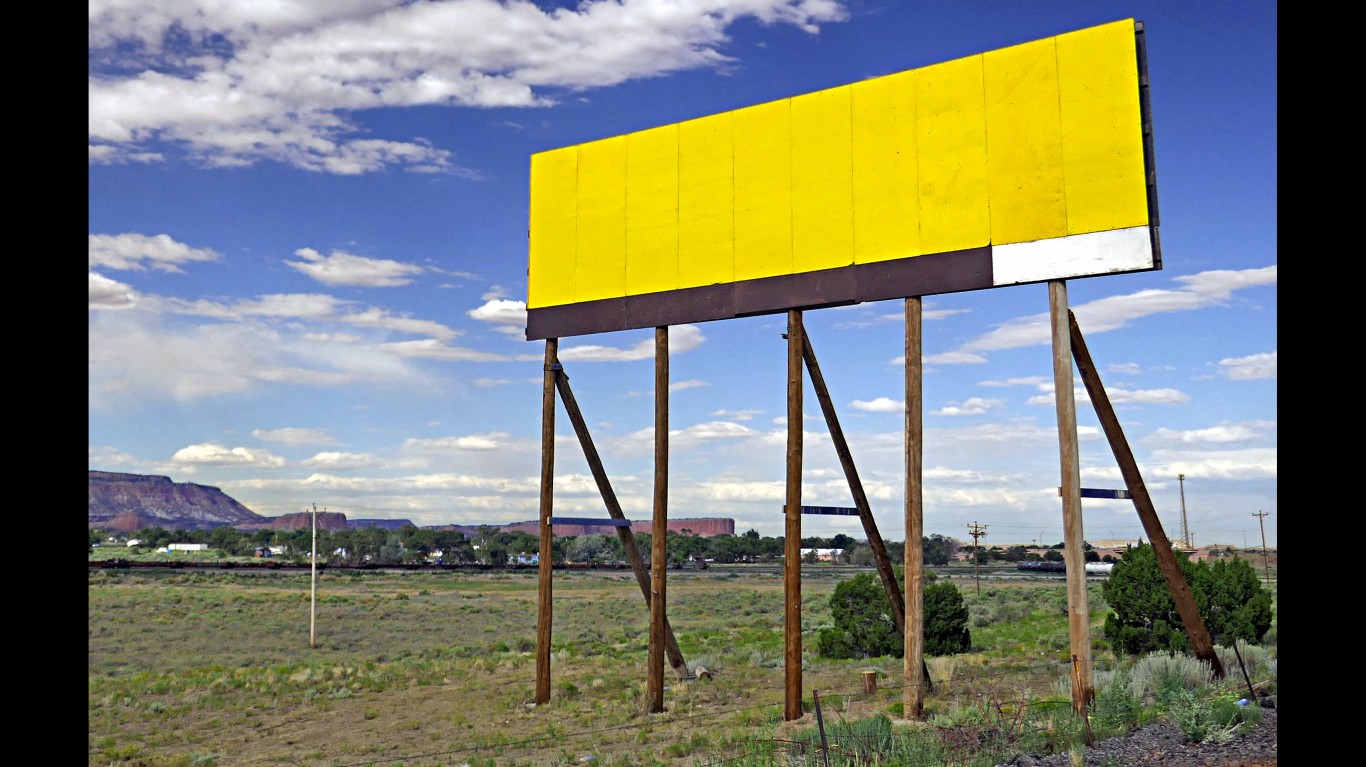
 24/7 Wall St.
24/7 Wall St.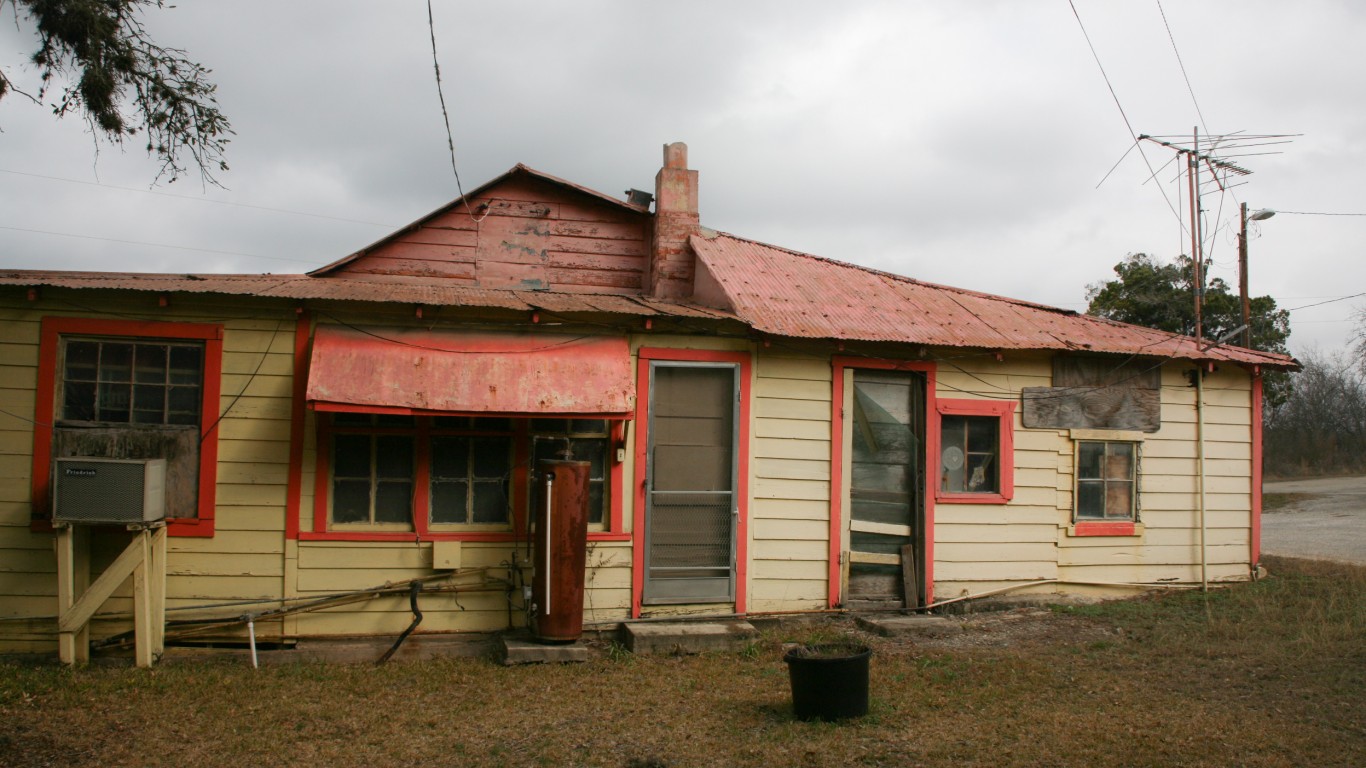

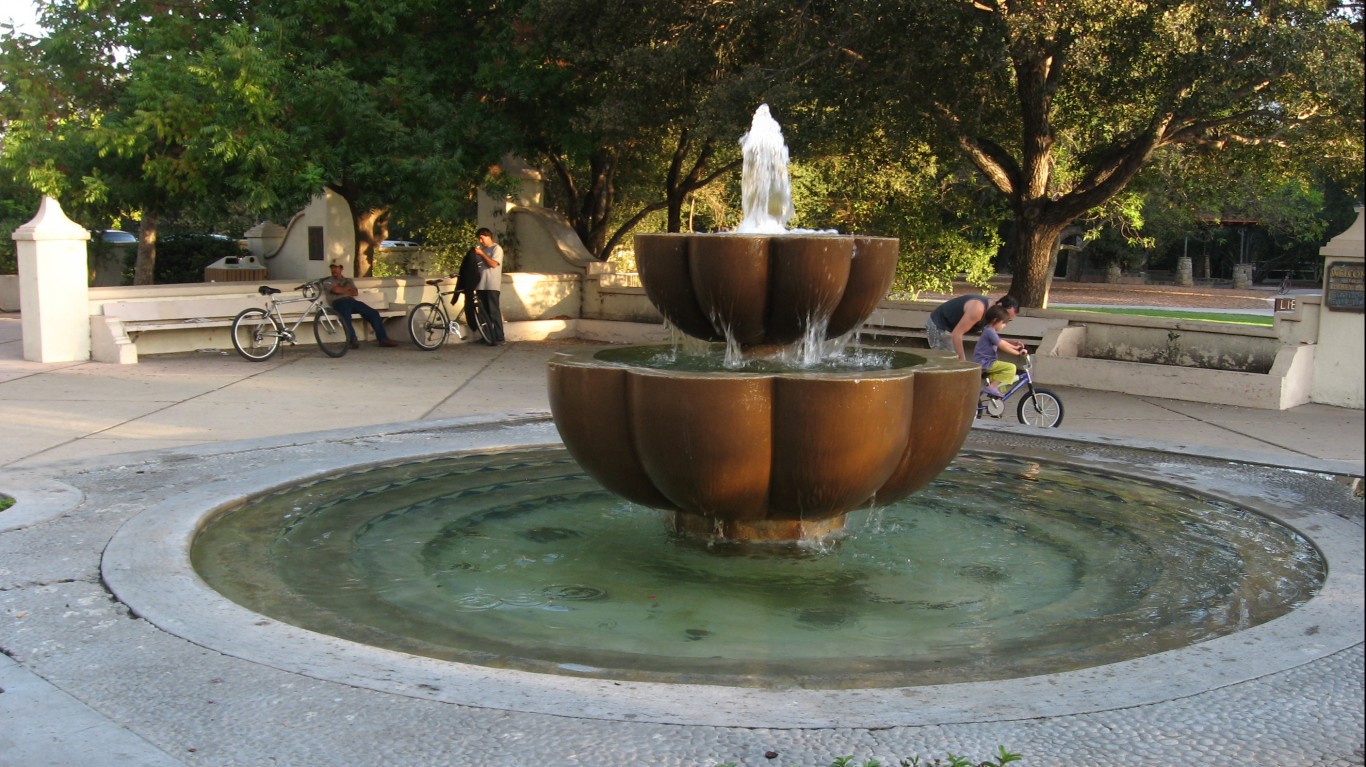
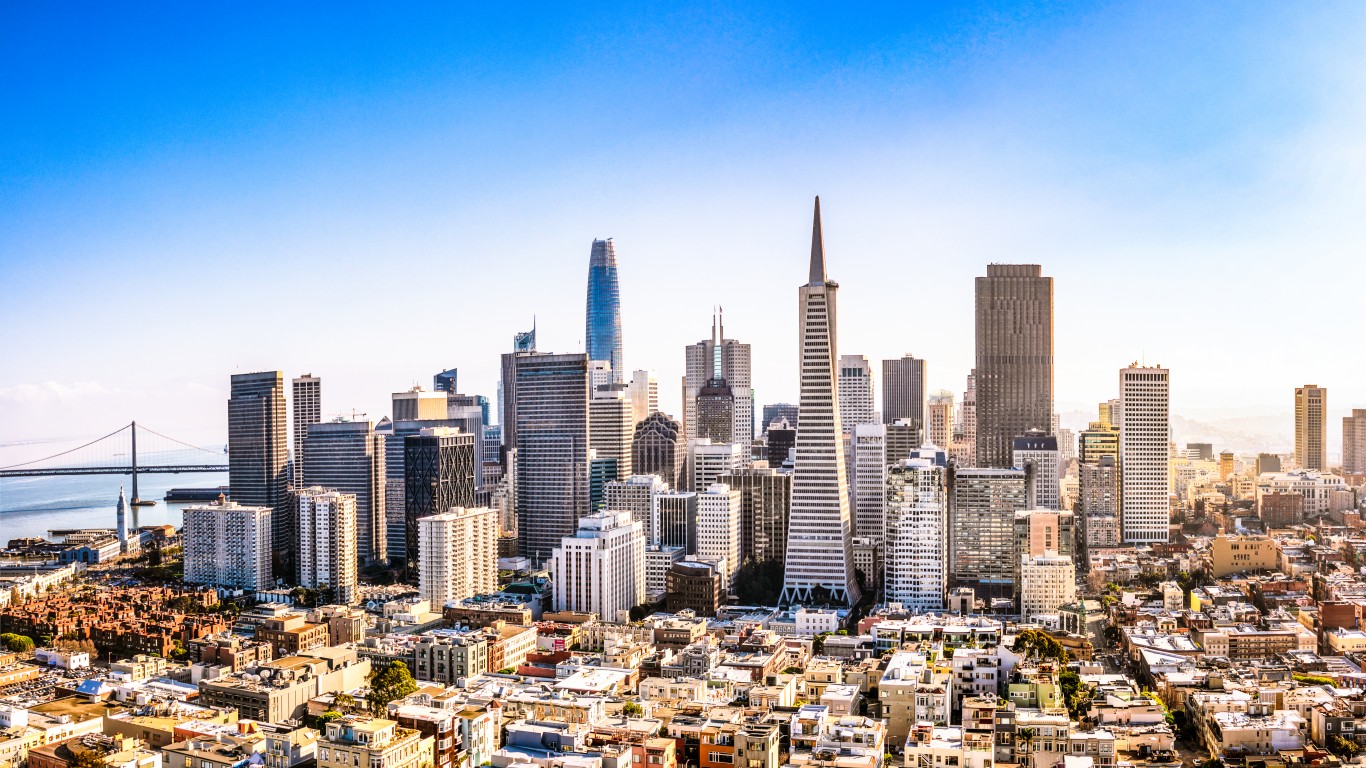 24/7 Wall St.
24/7 Wall St.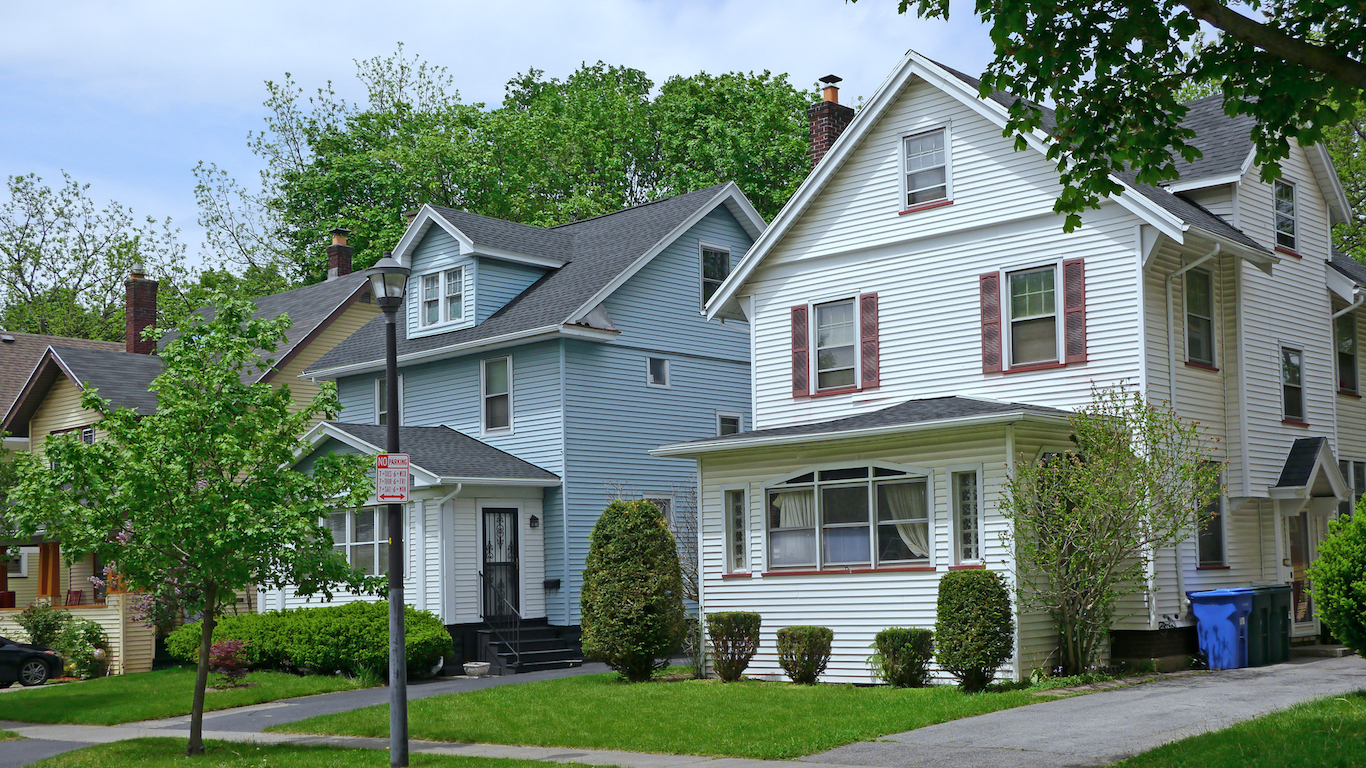 24/7 Wall St.
24/7 Wall St.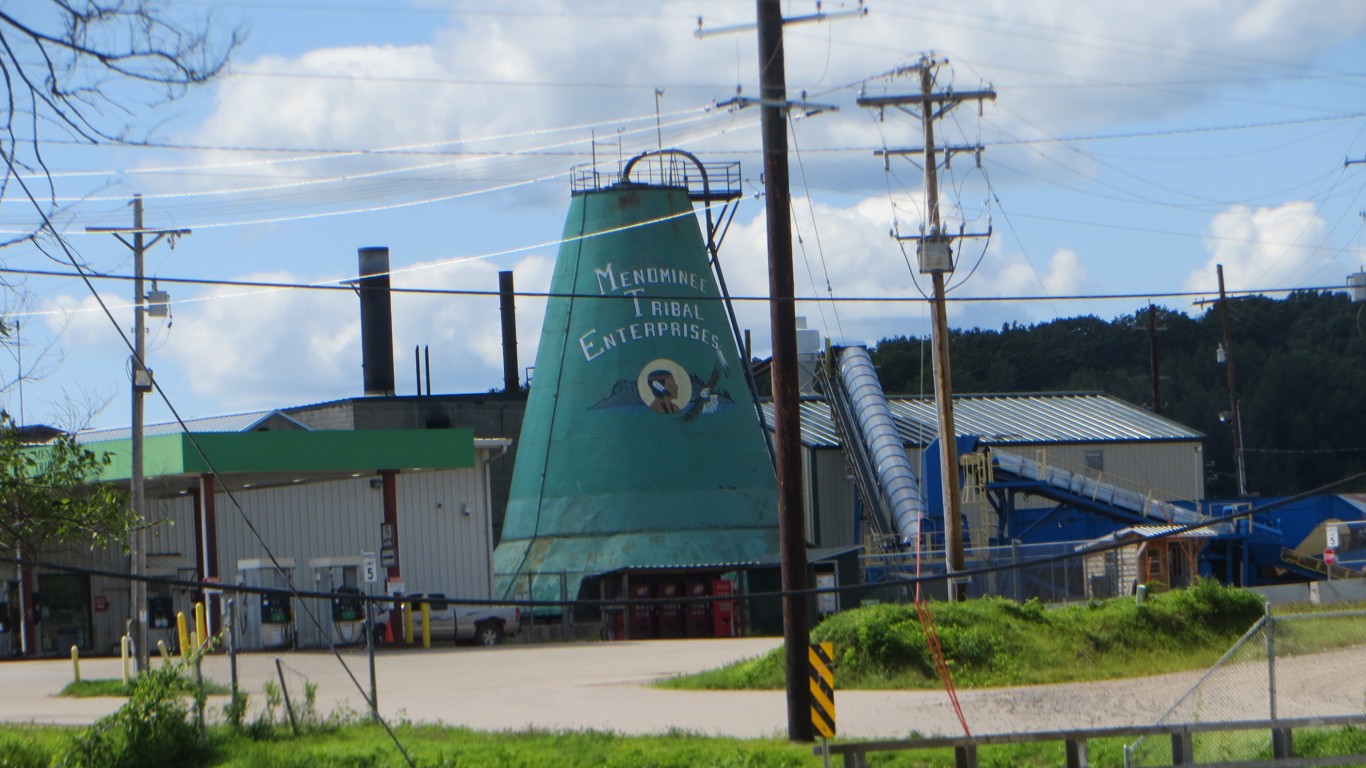
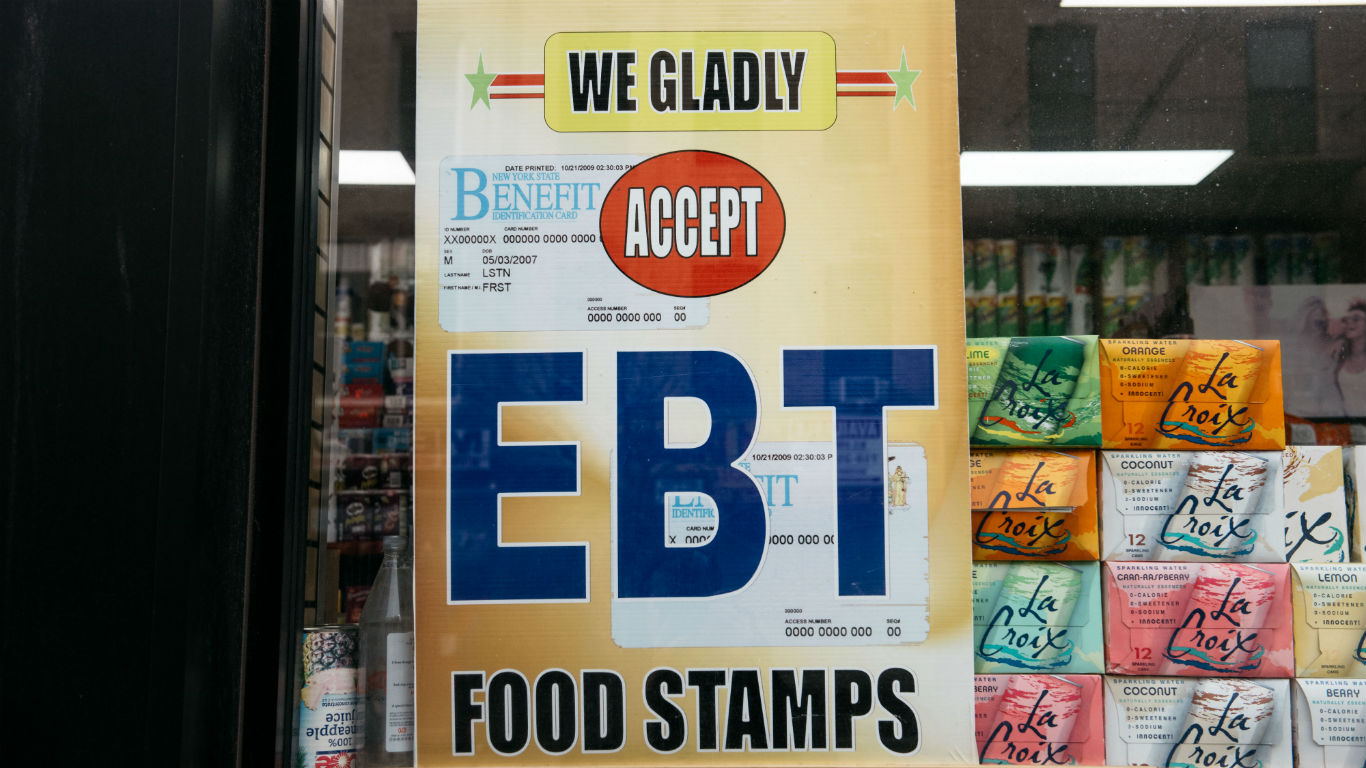 24/7 Wall St.
24/7 Wall St.